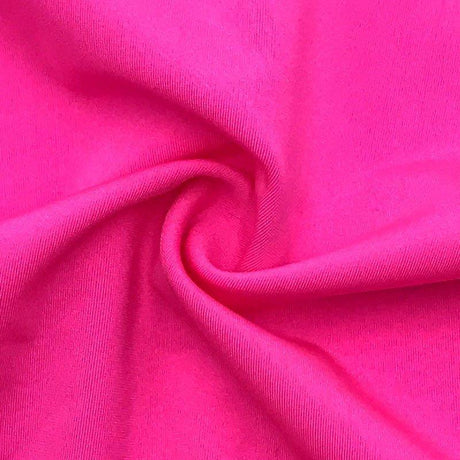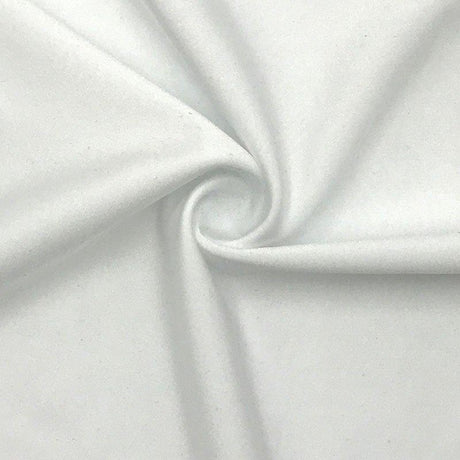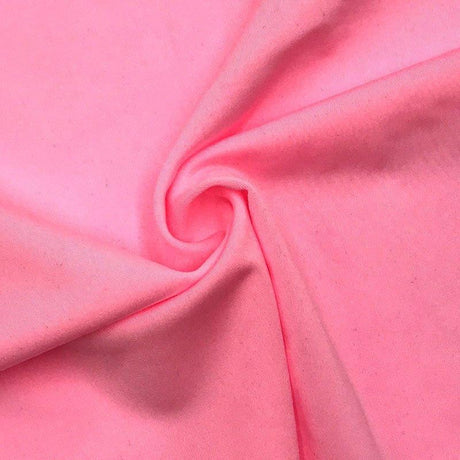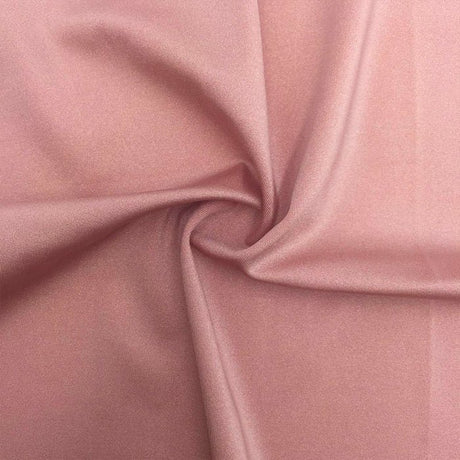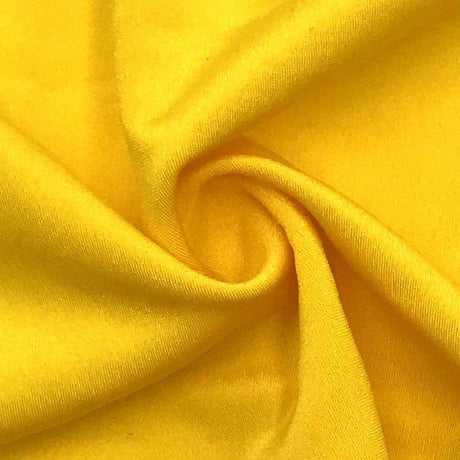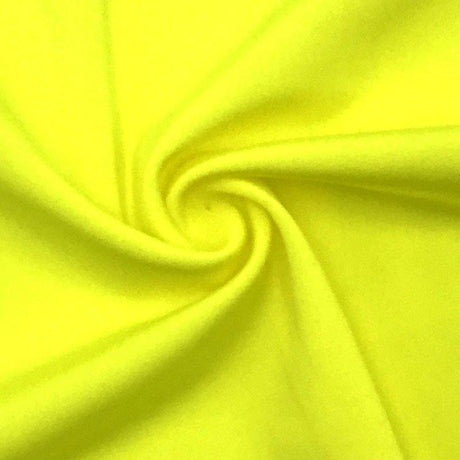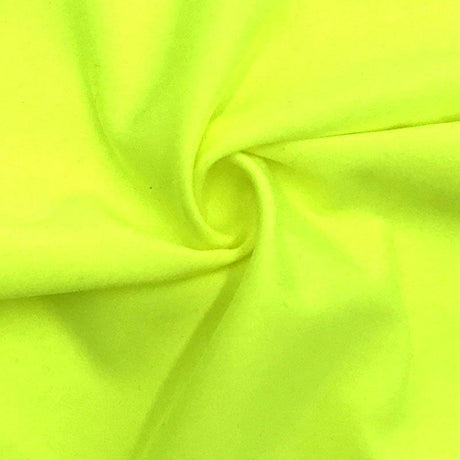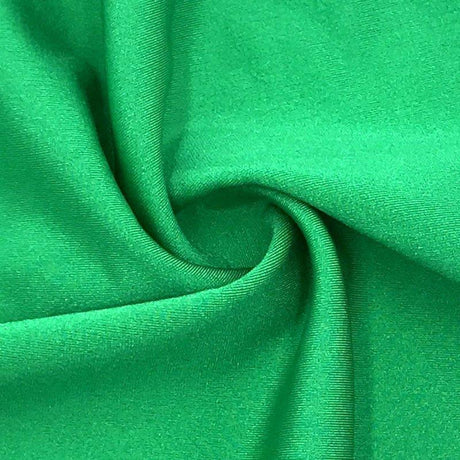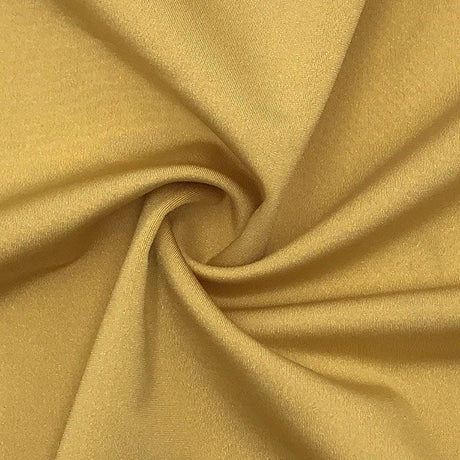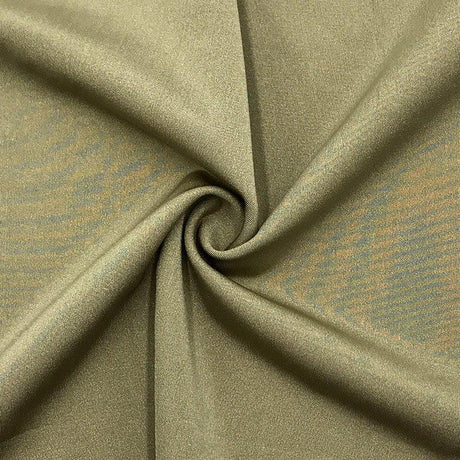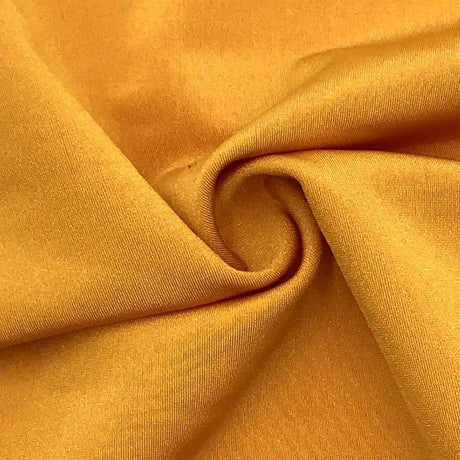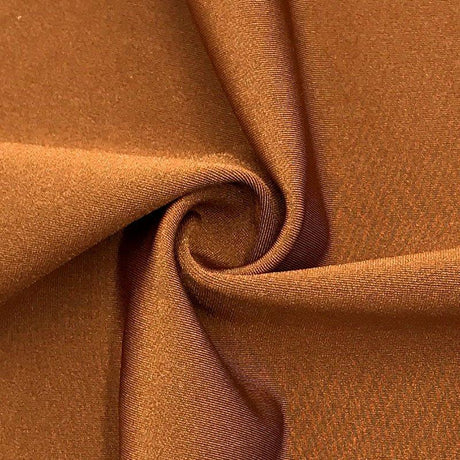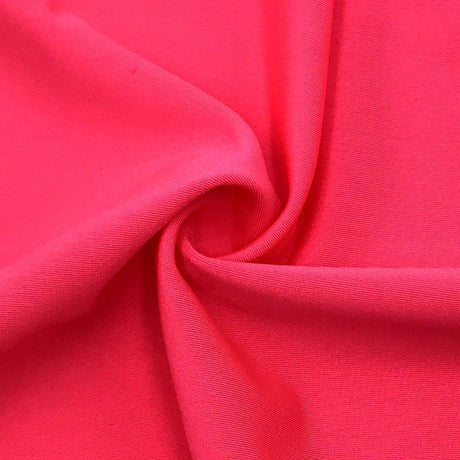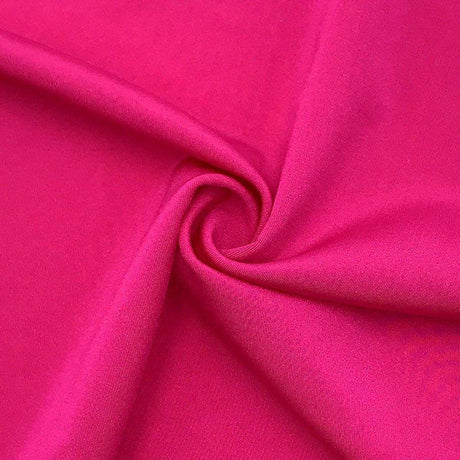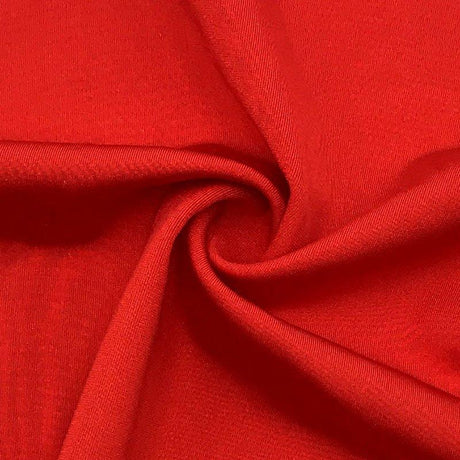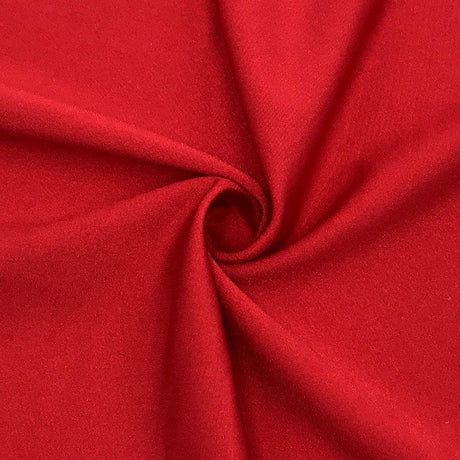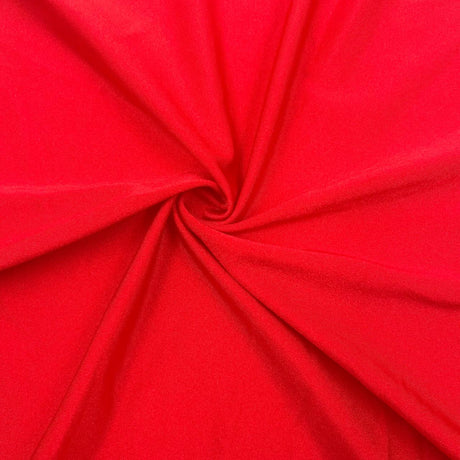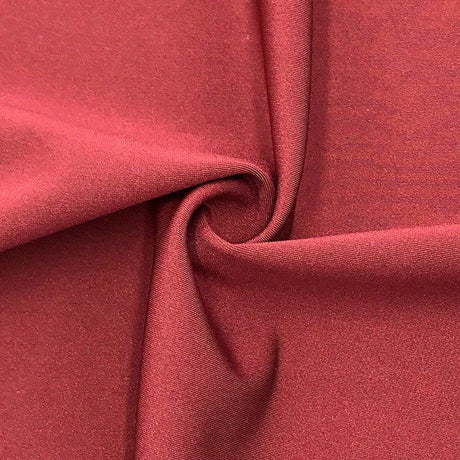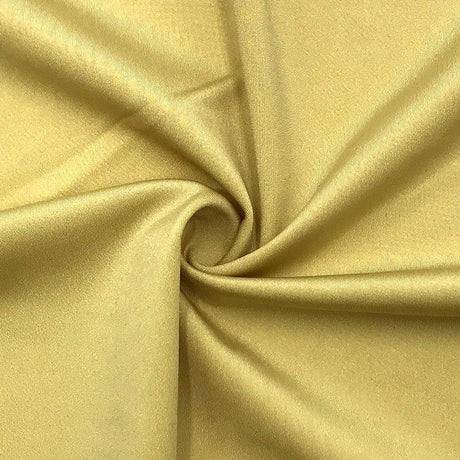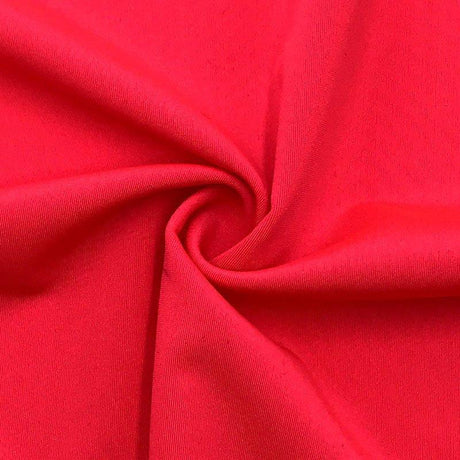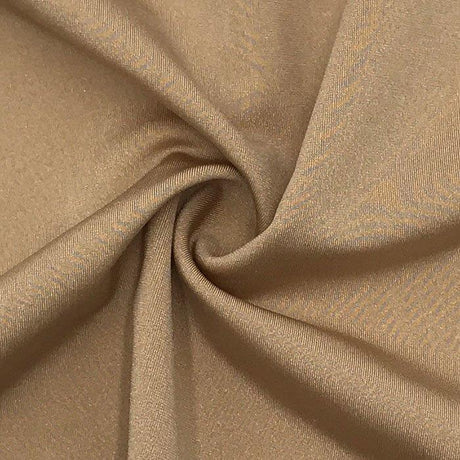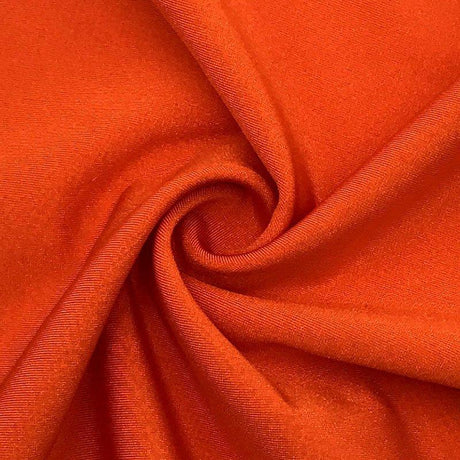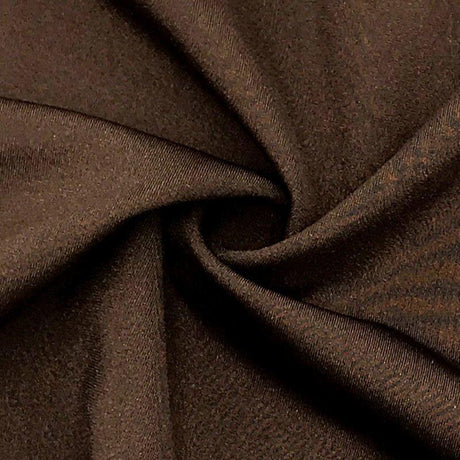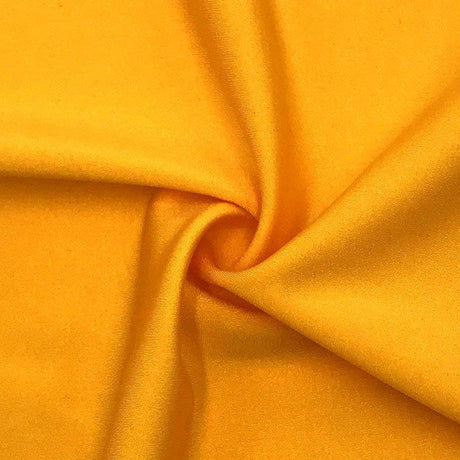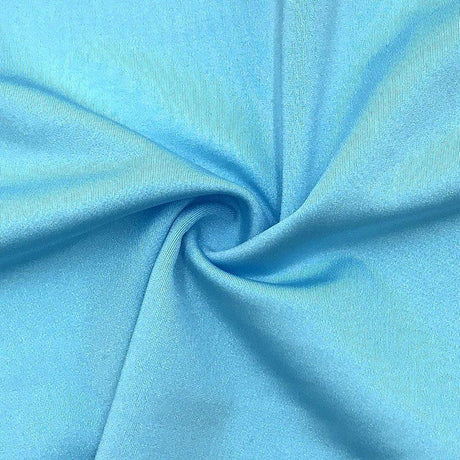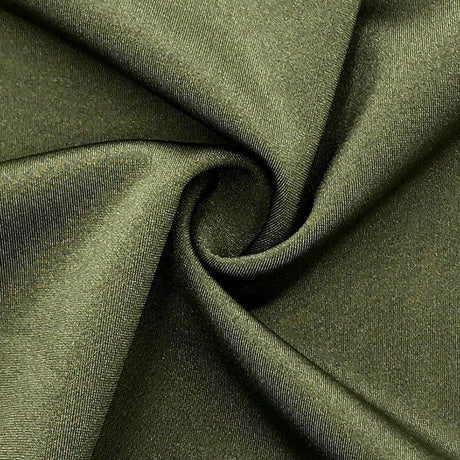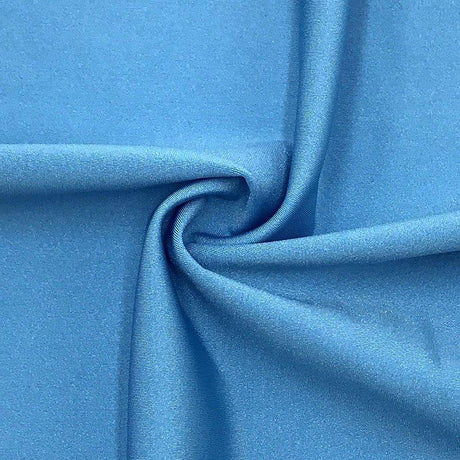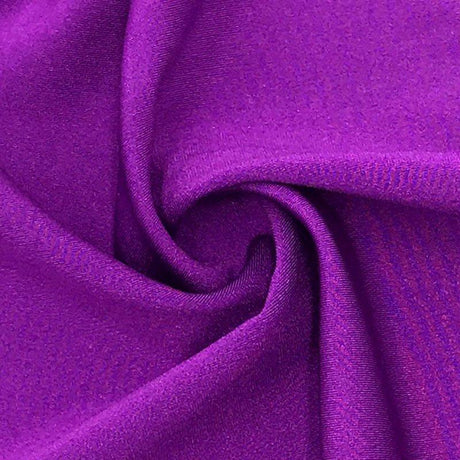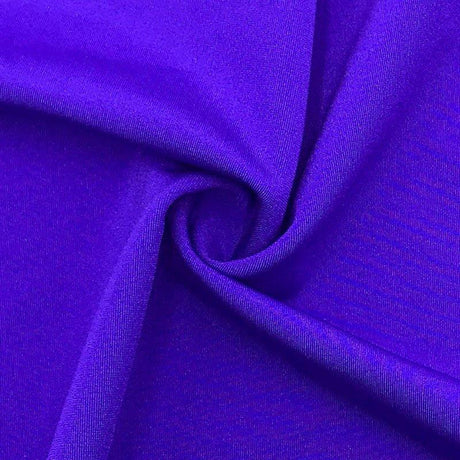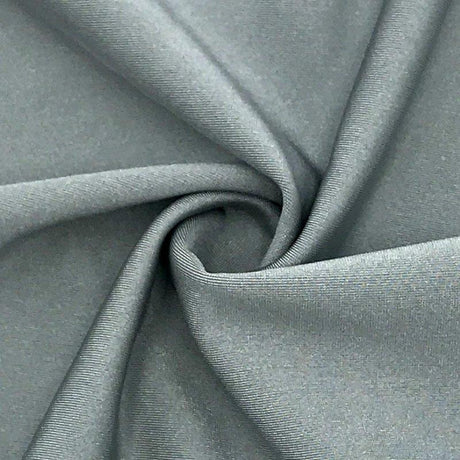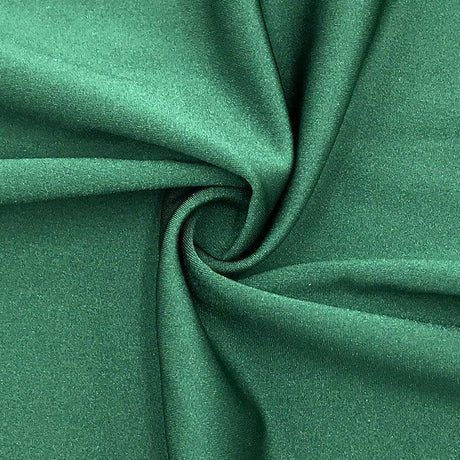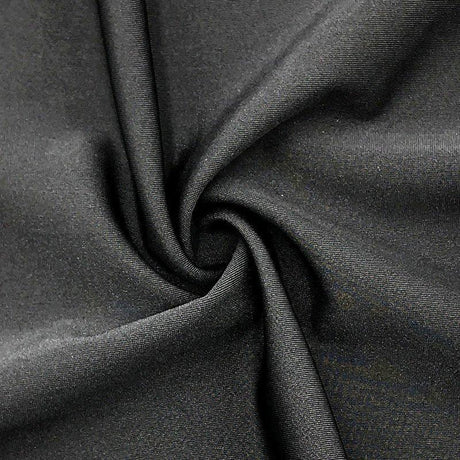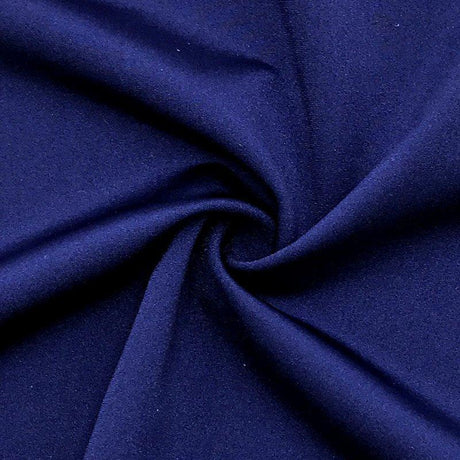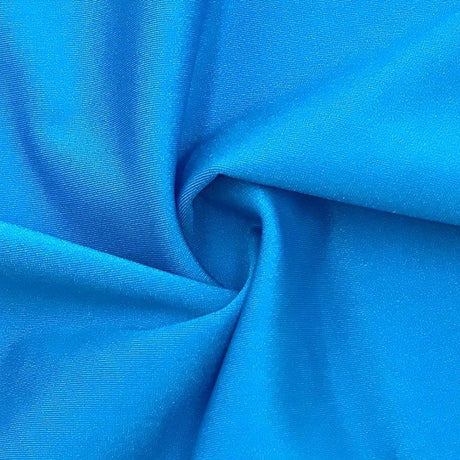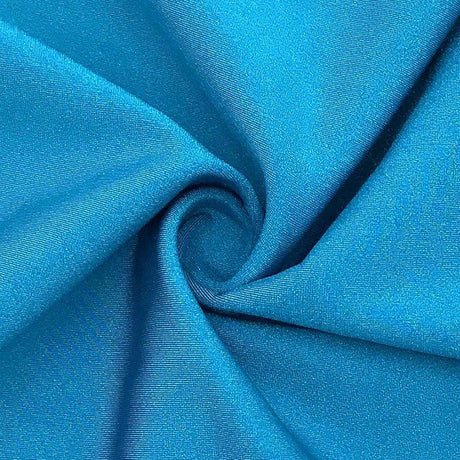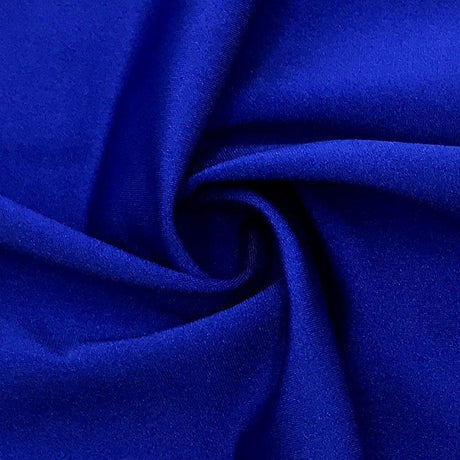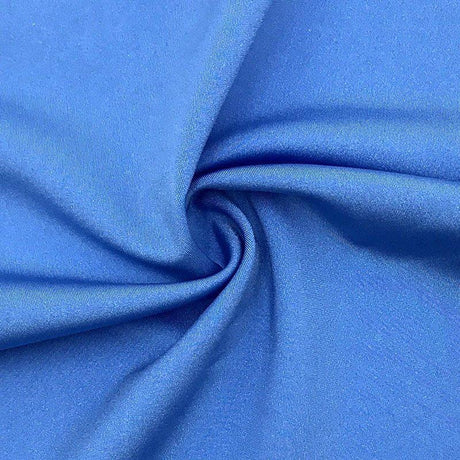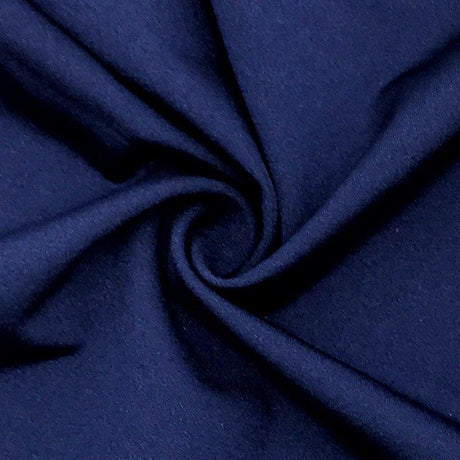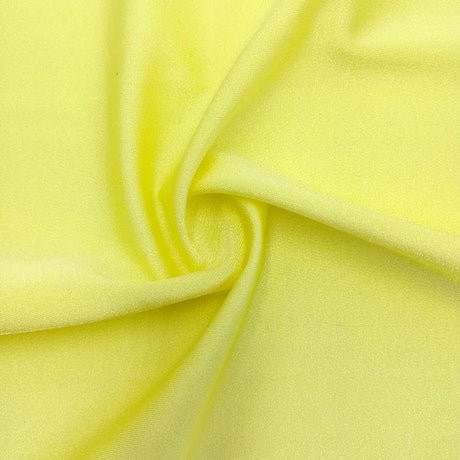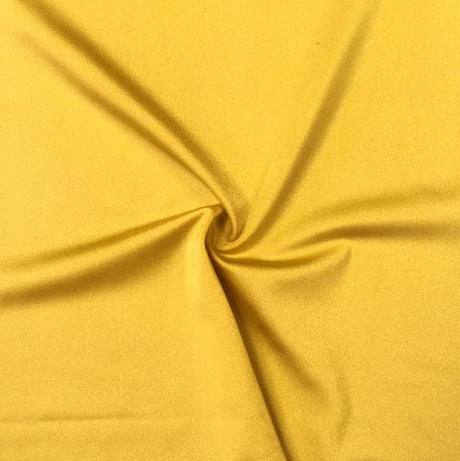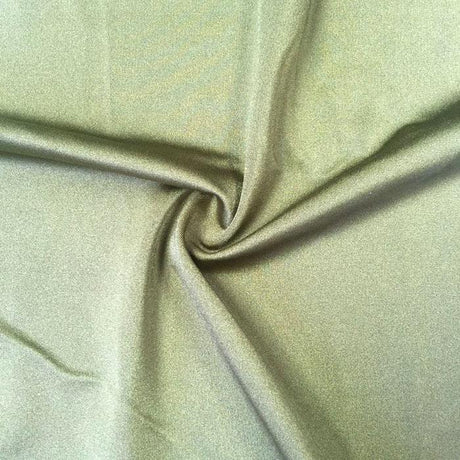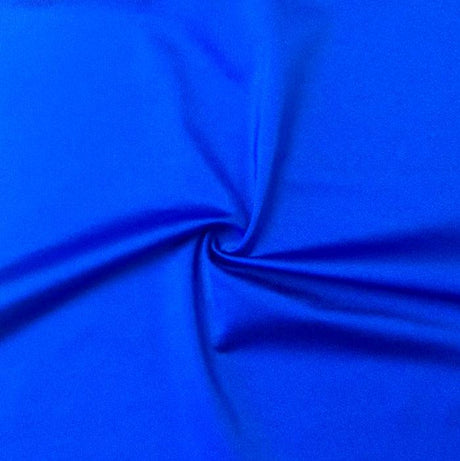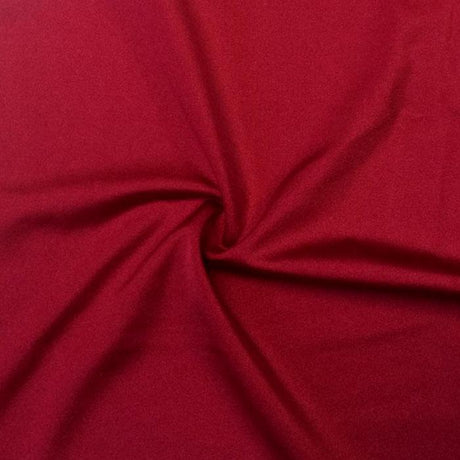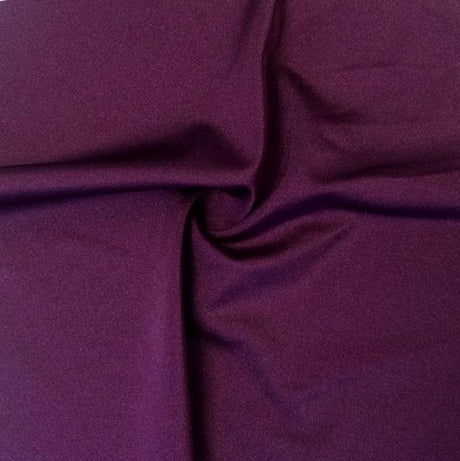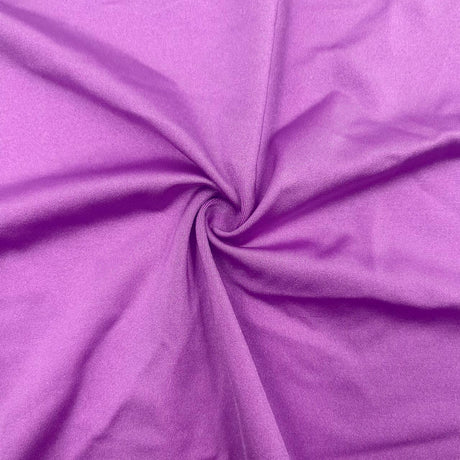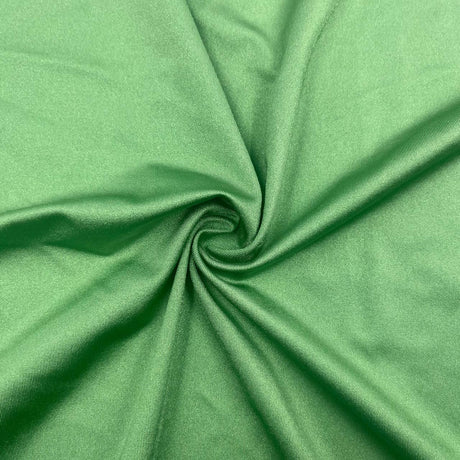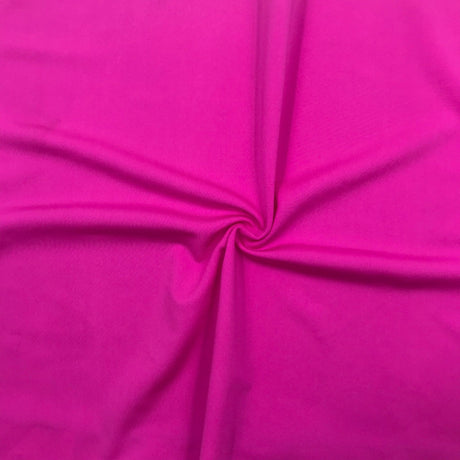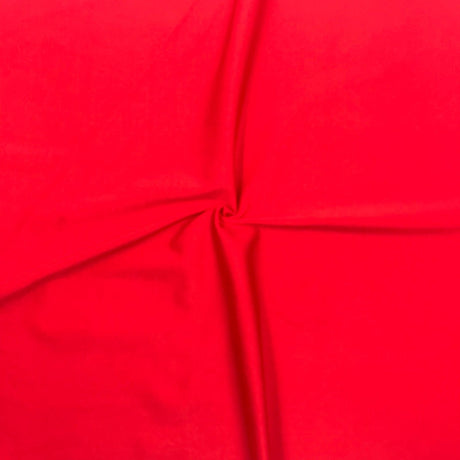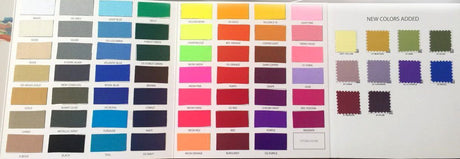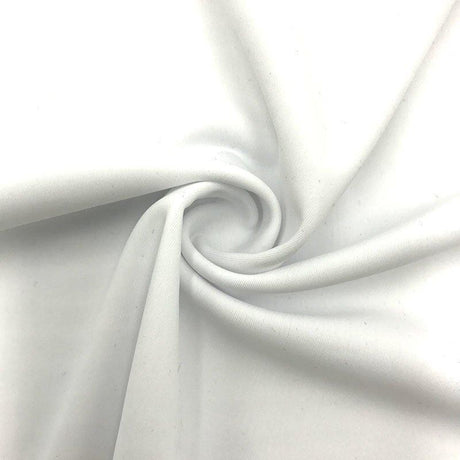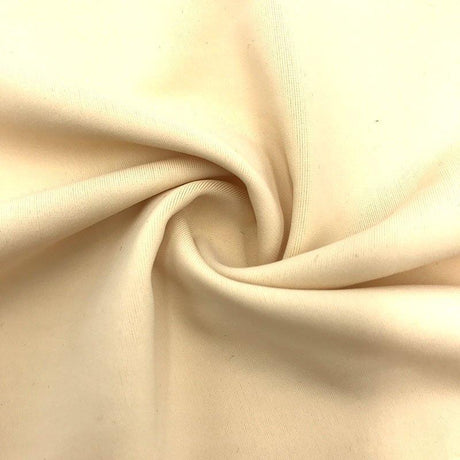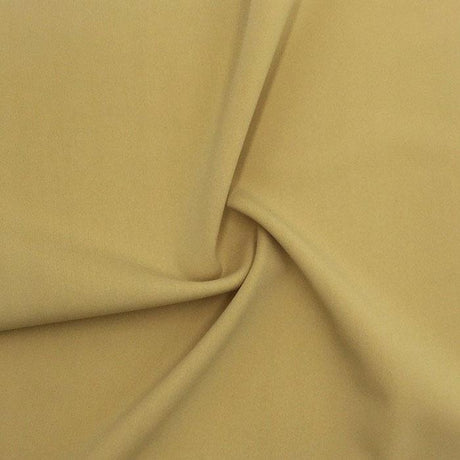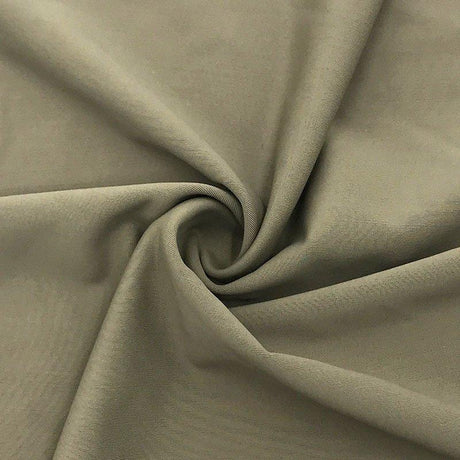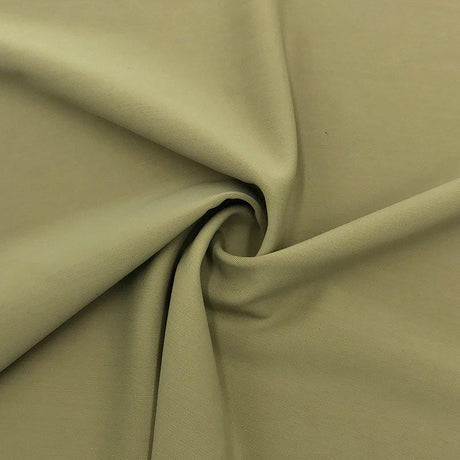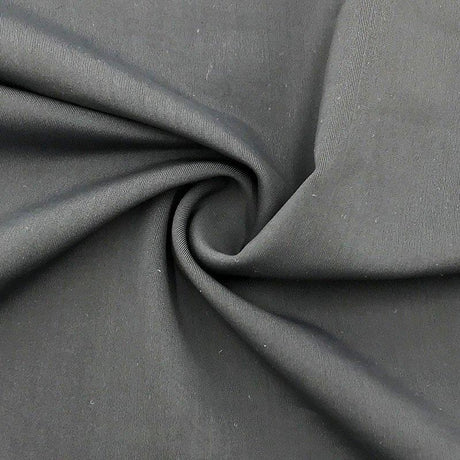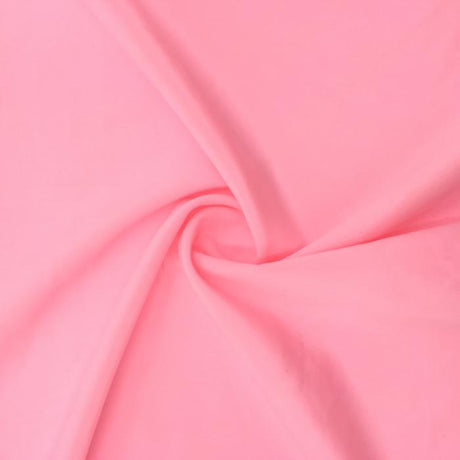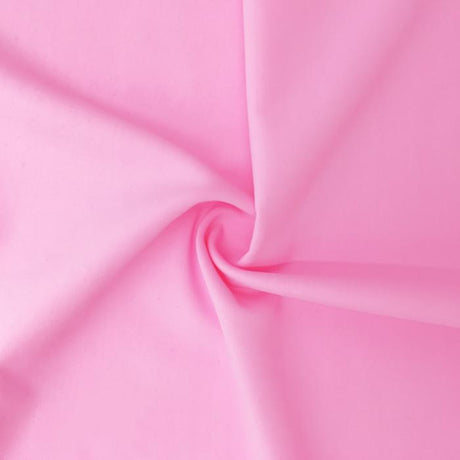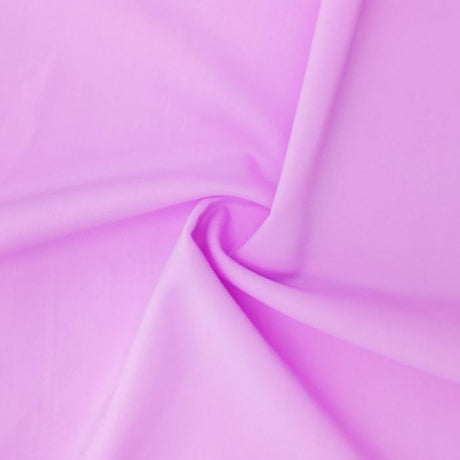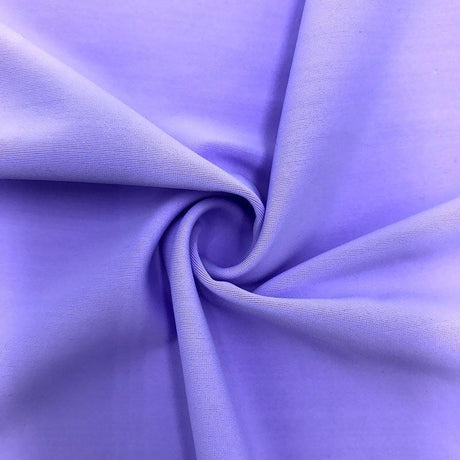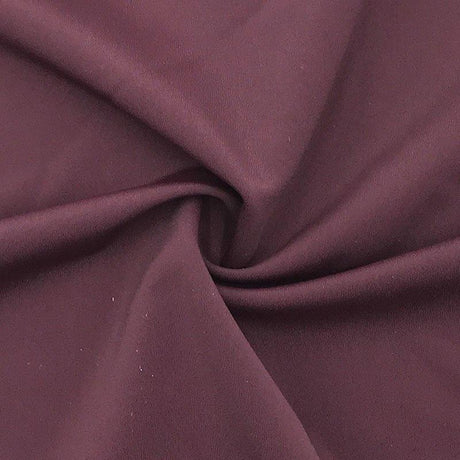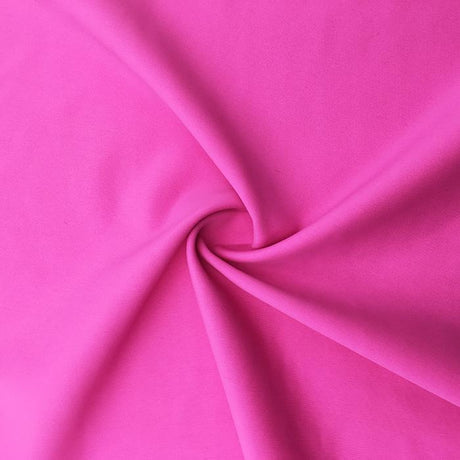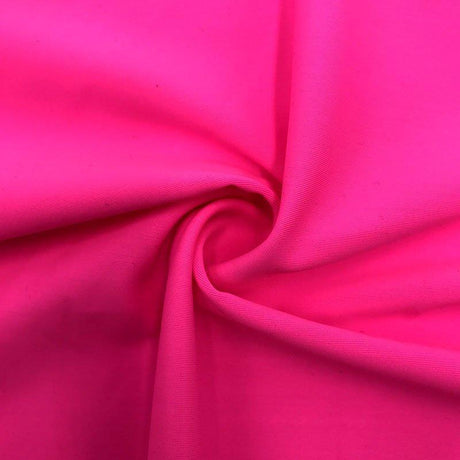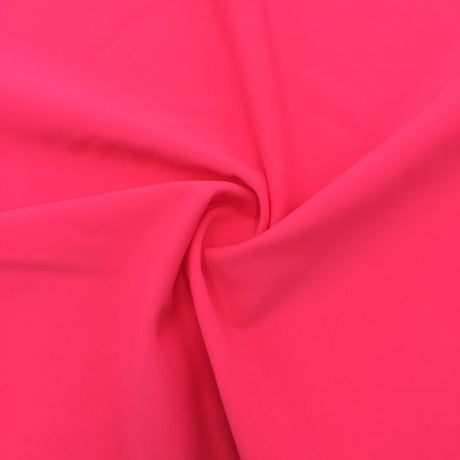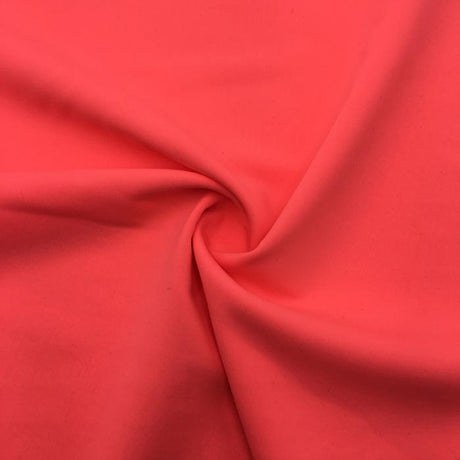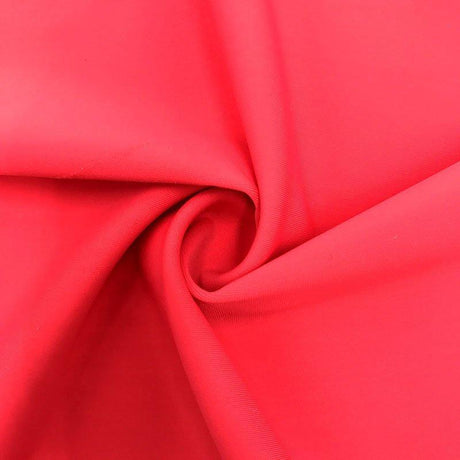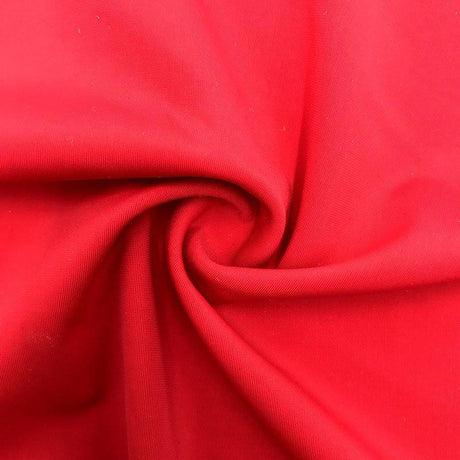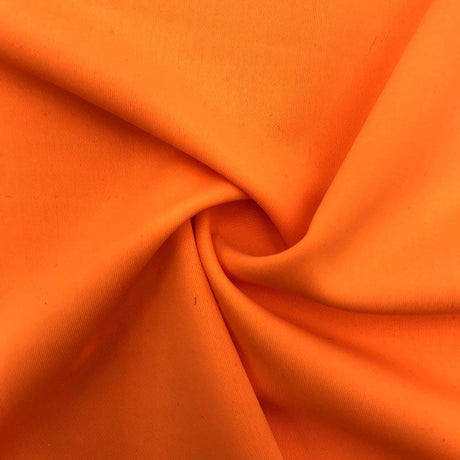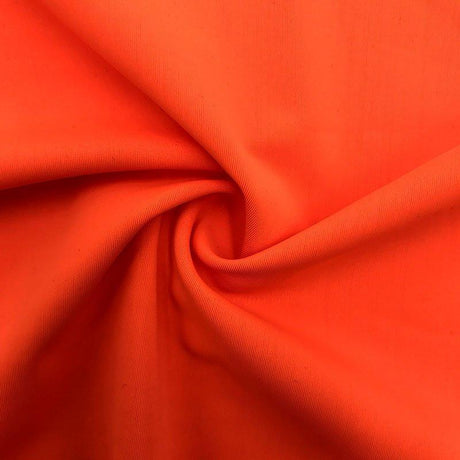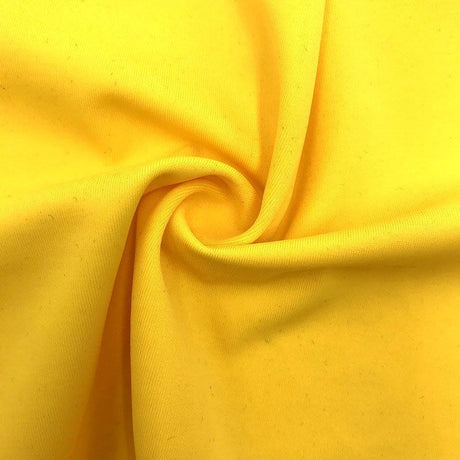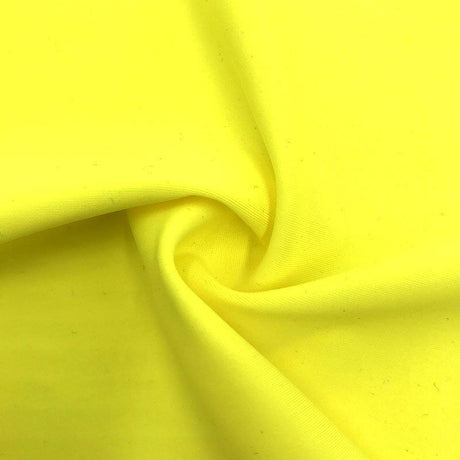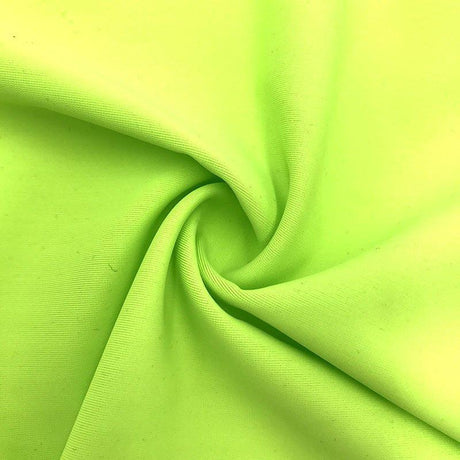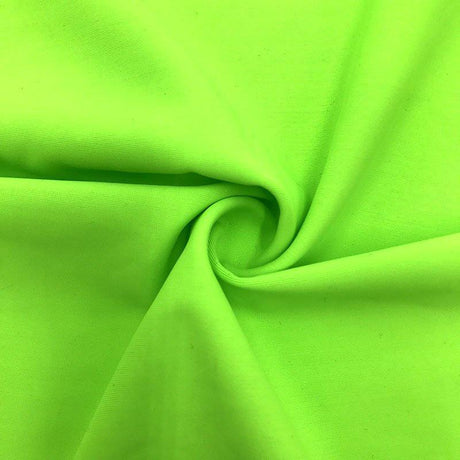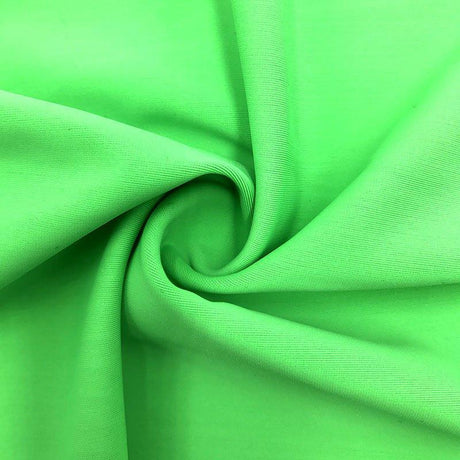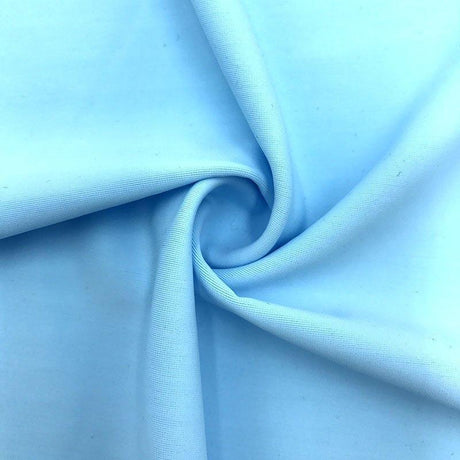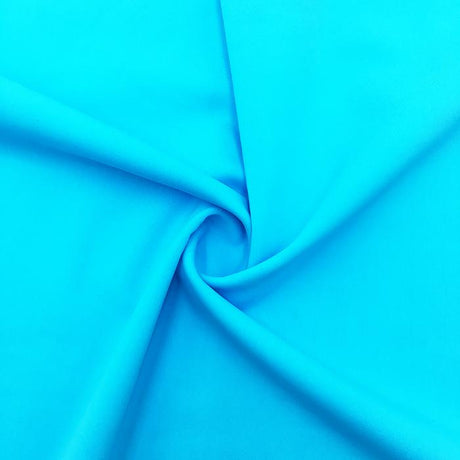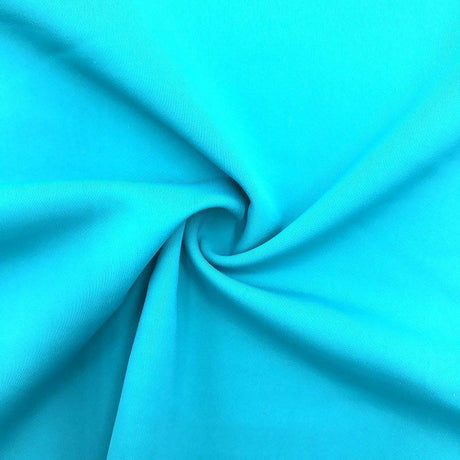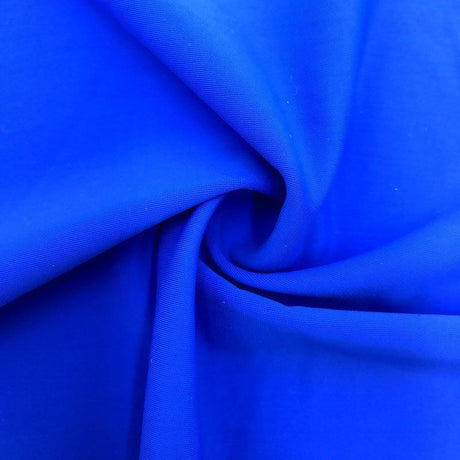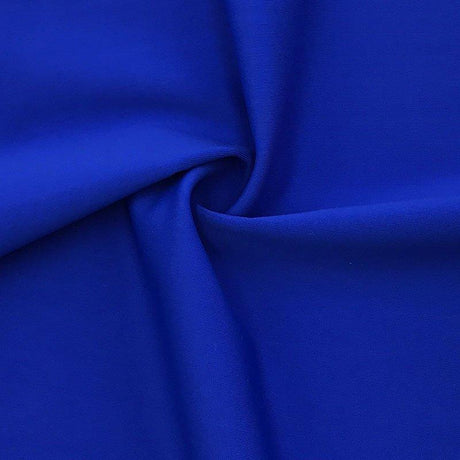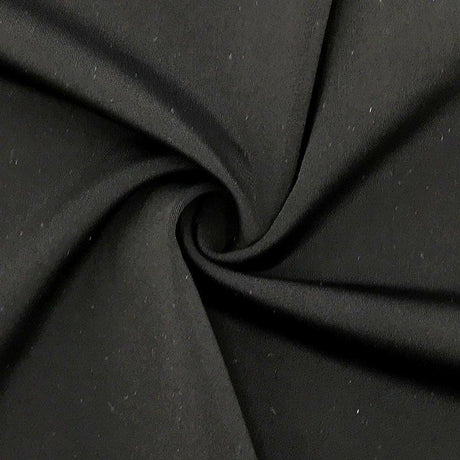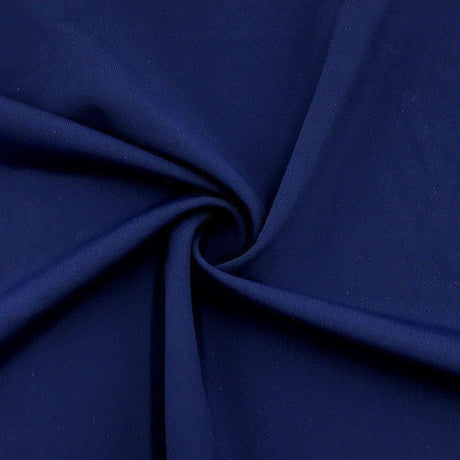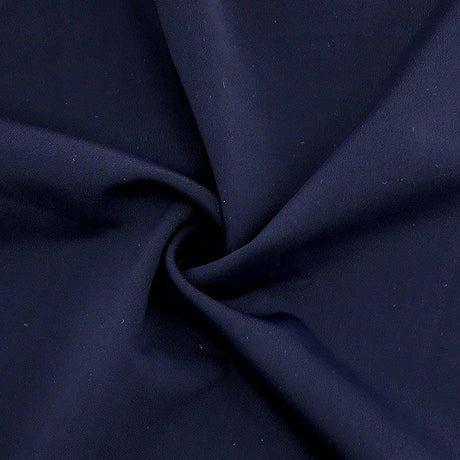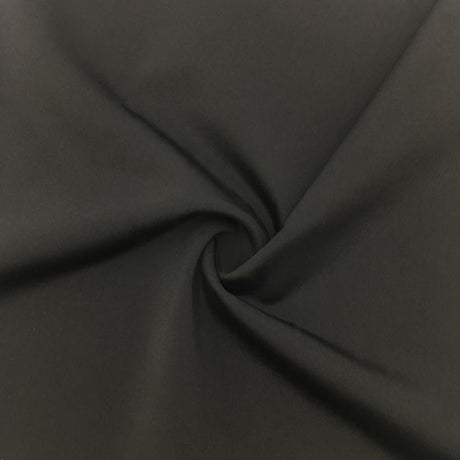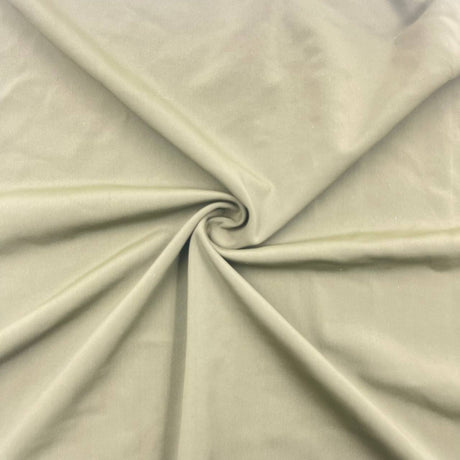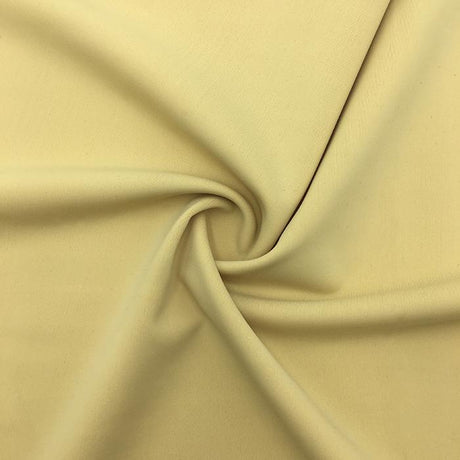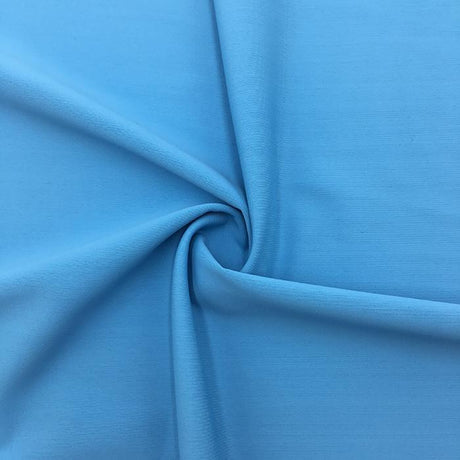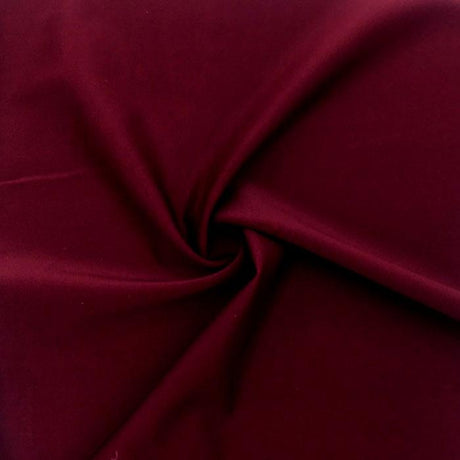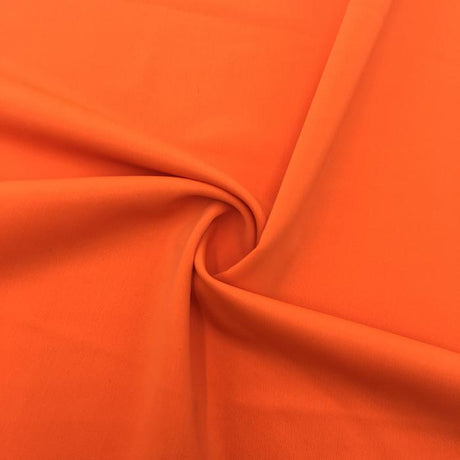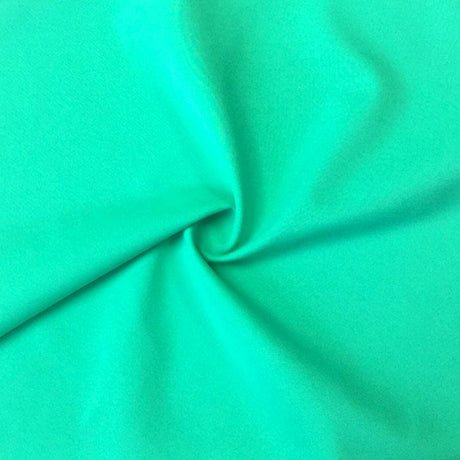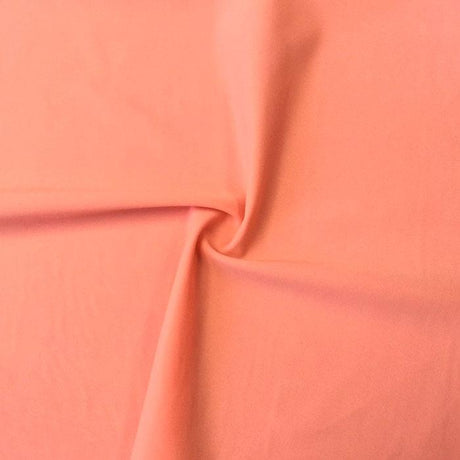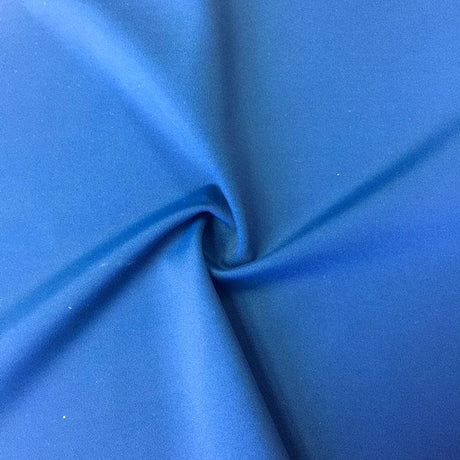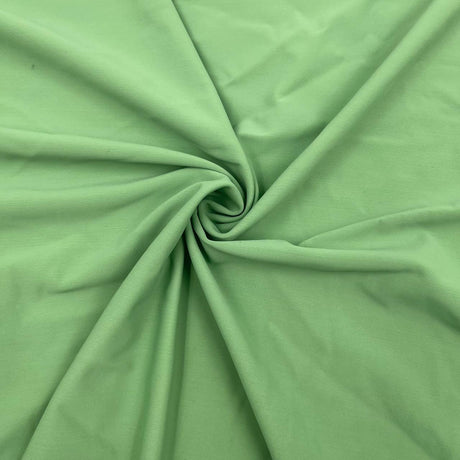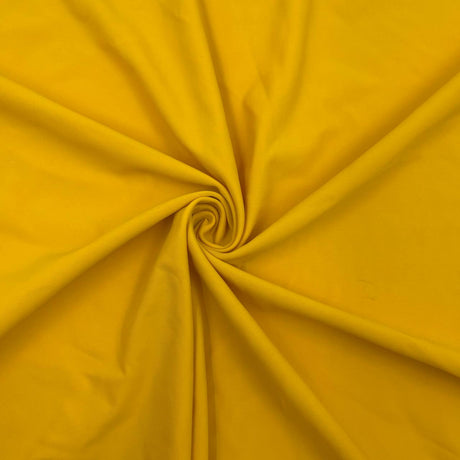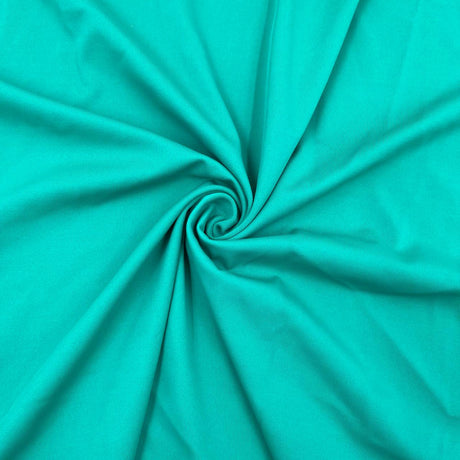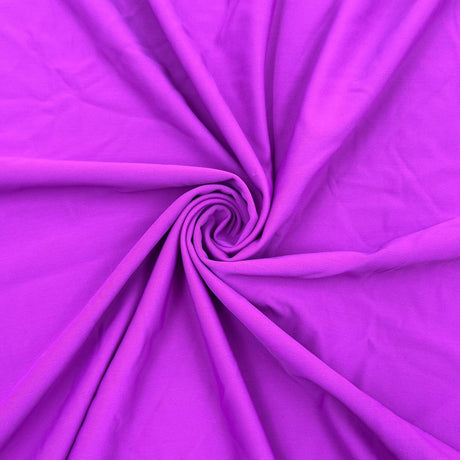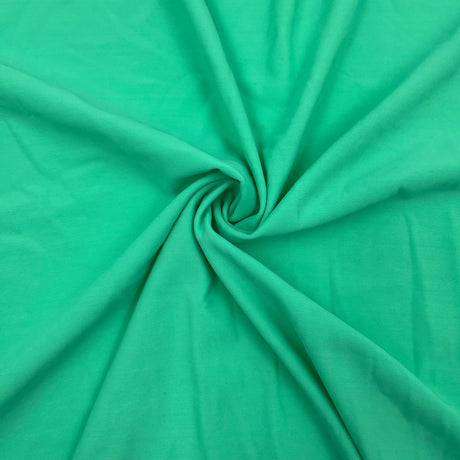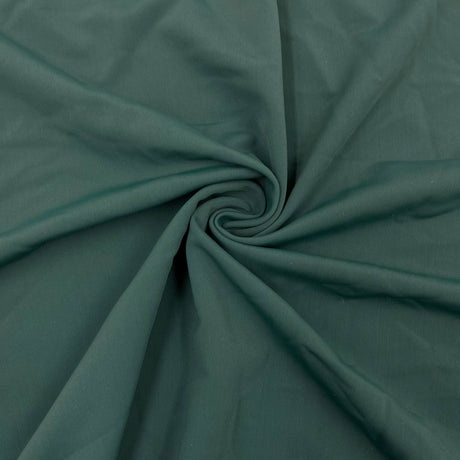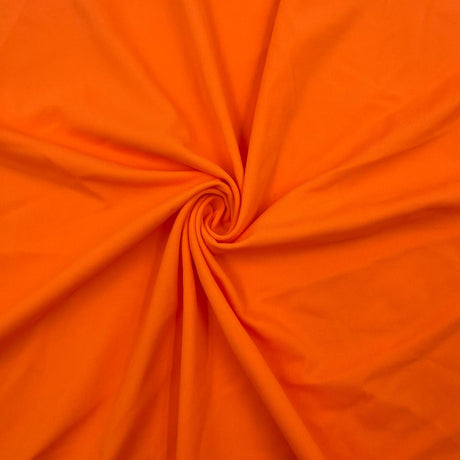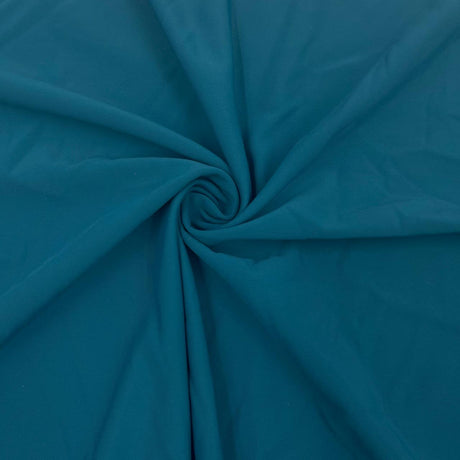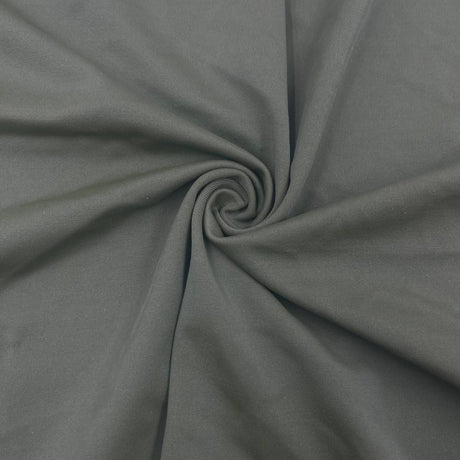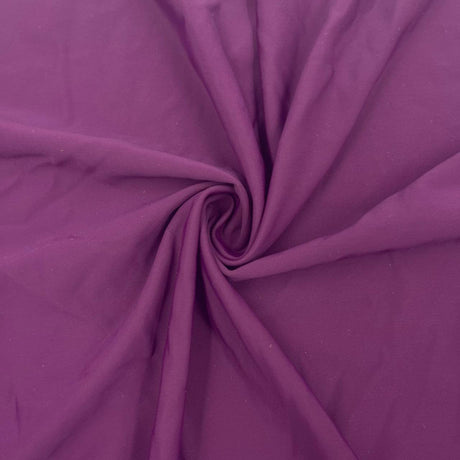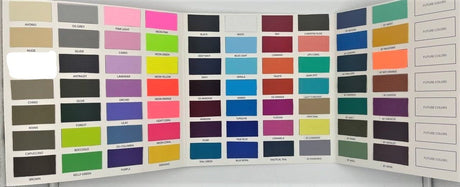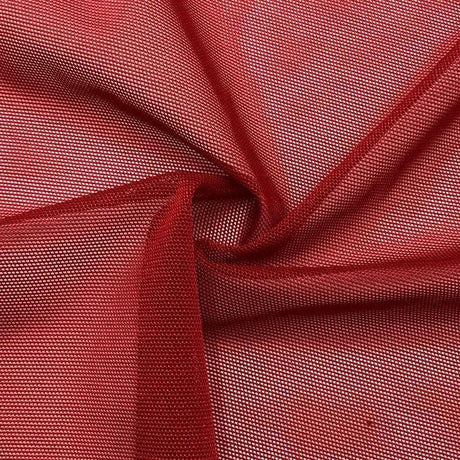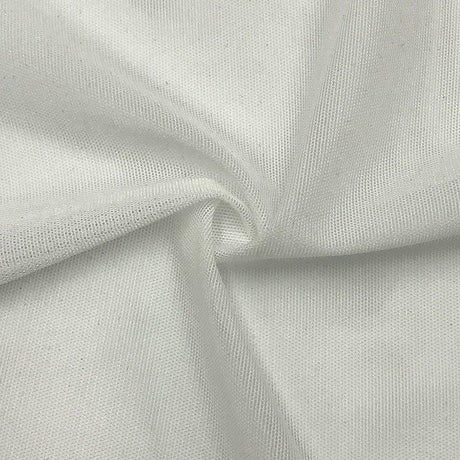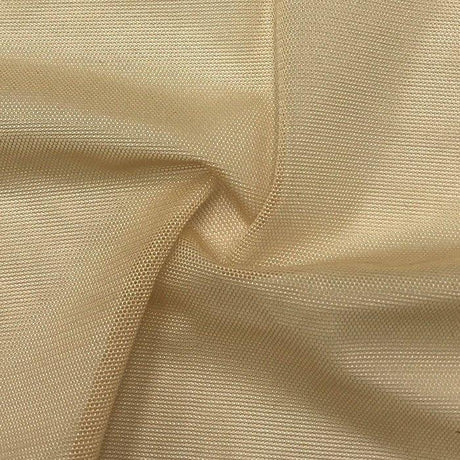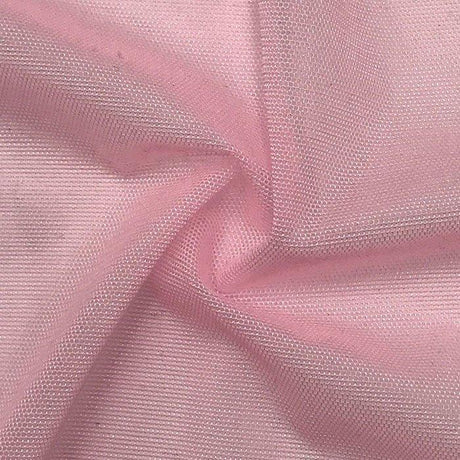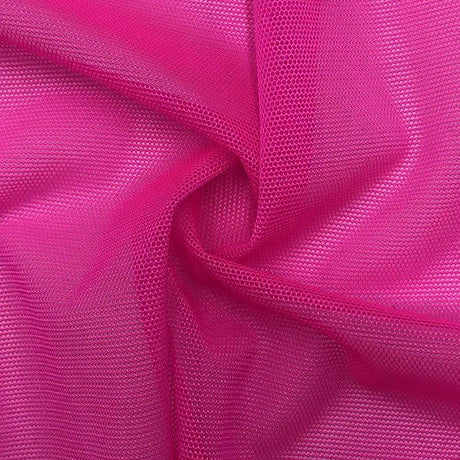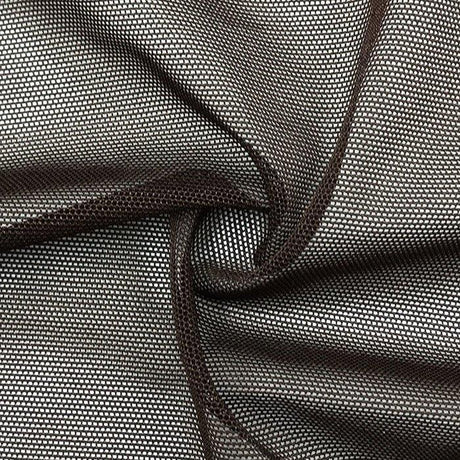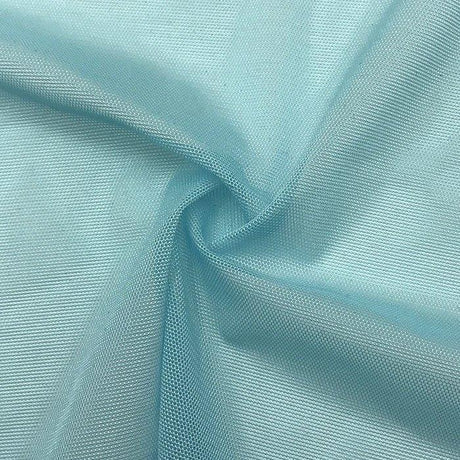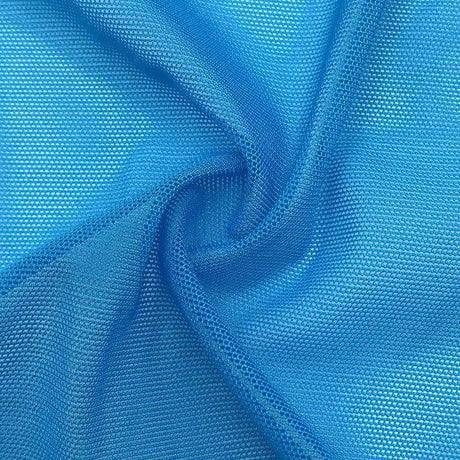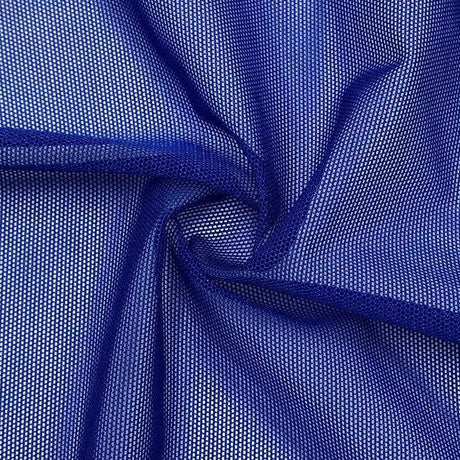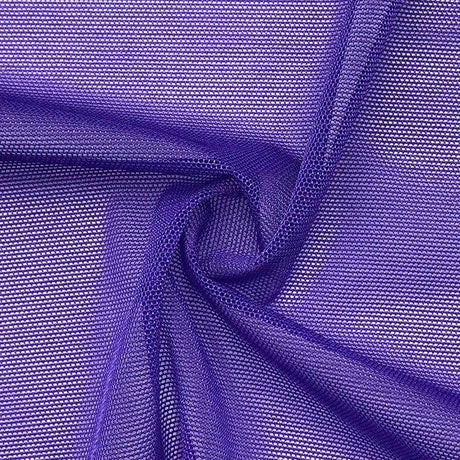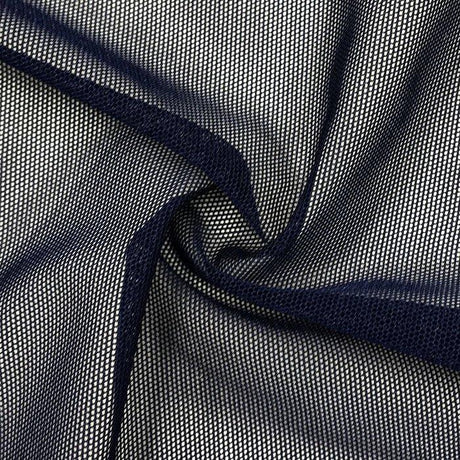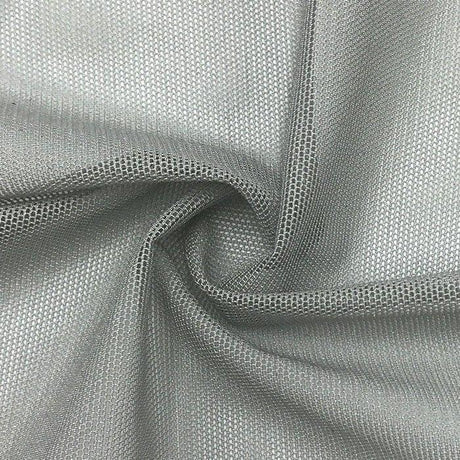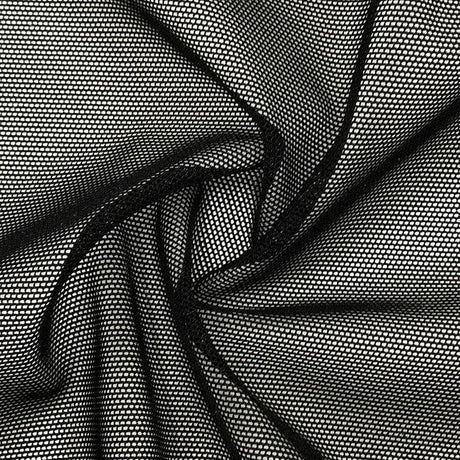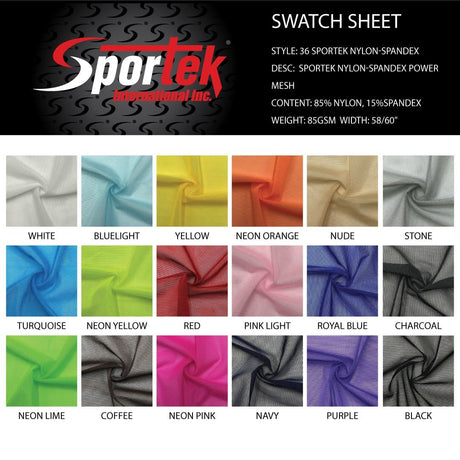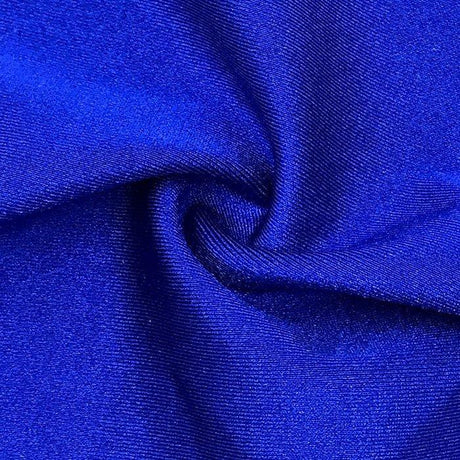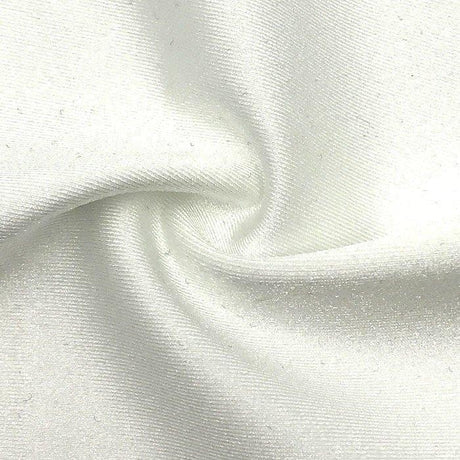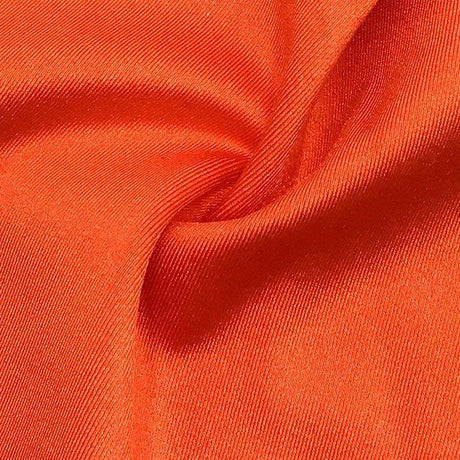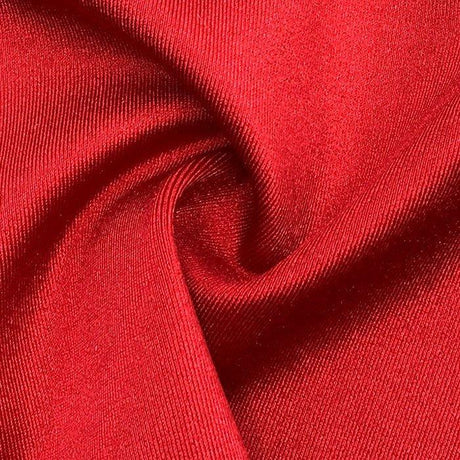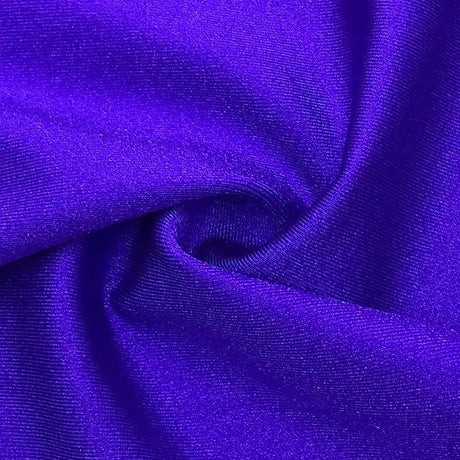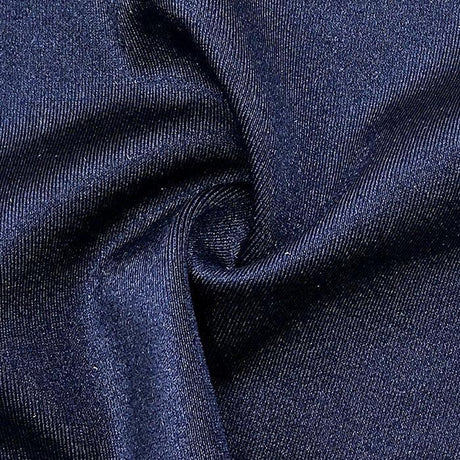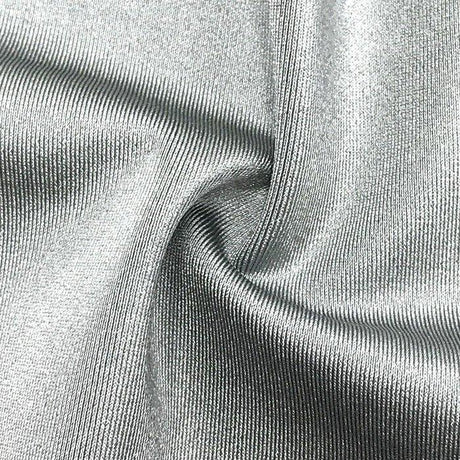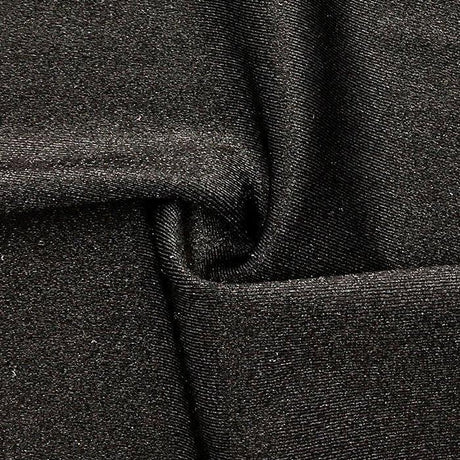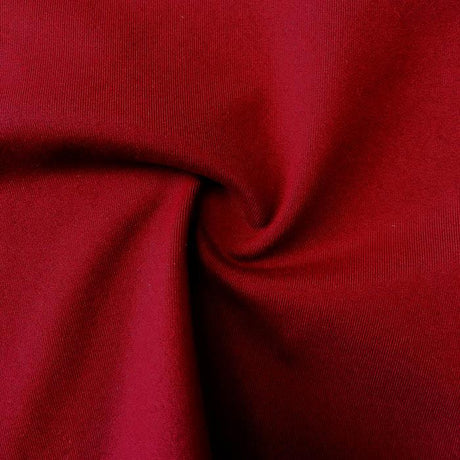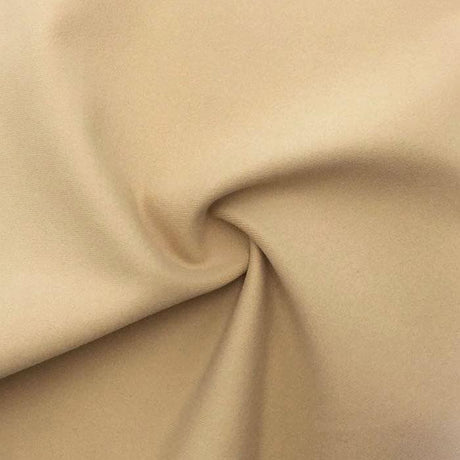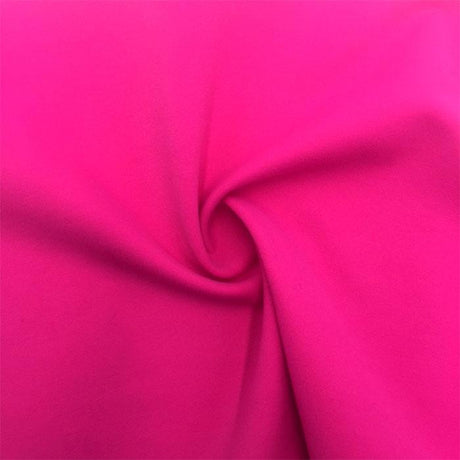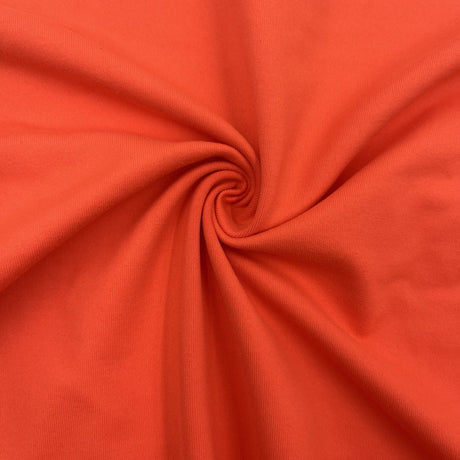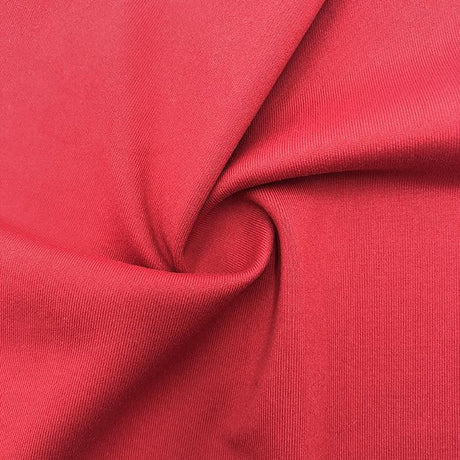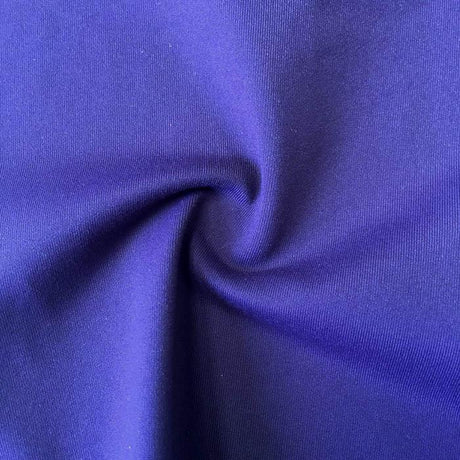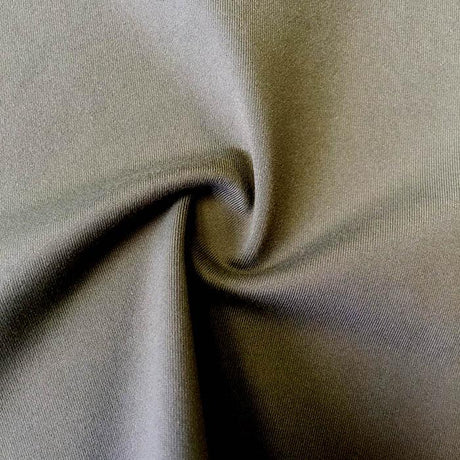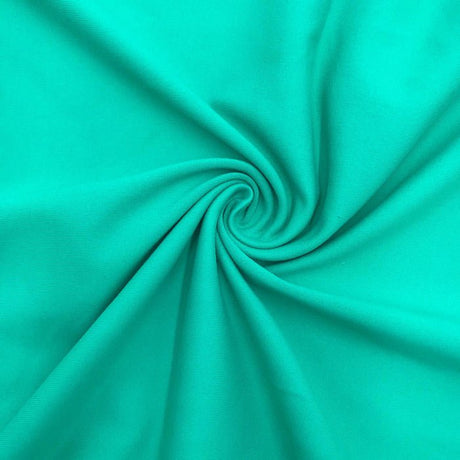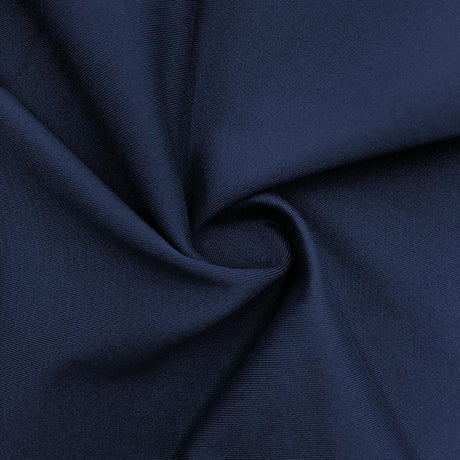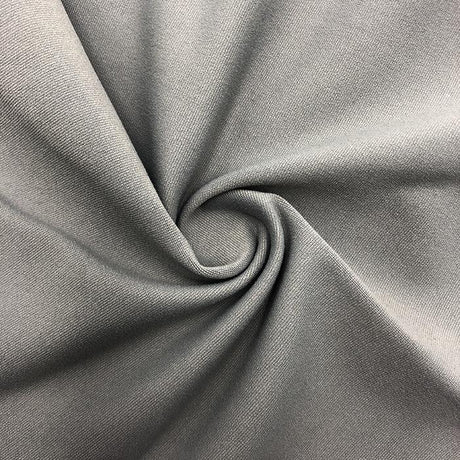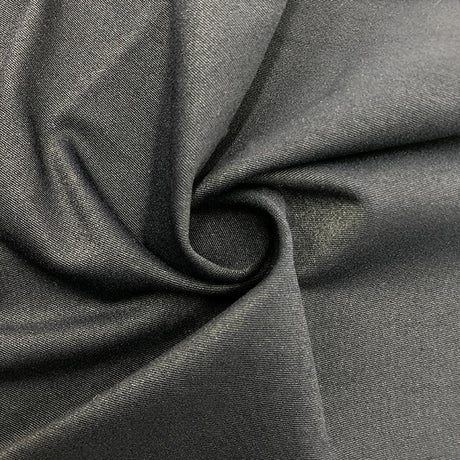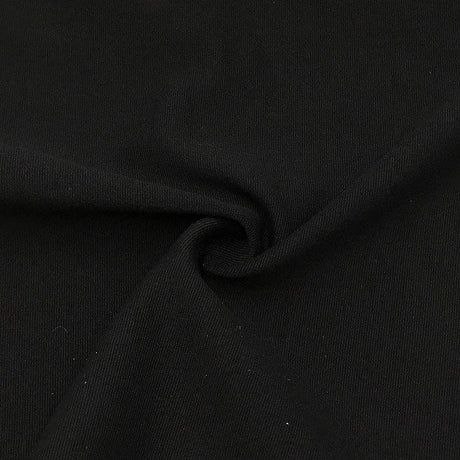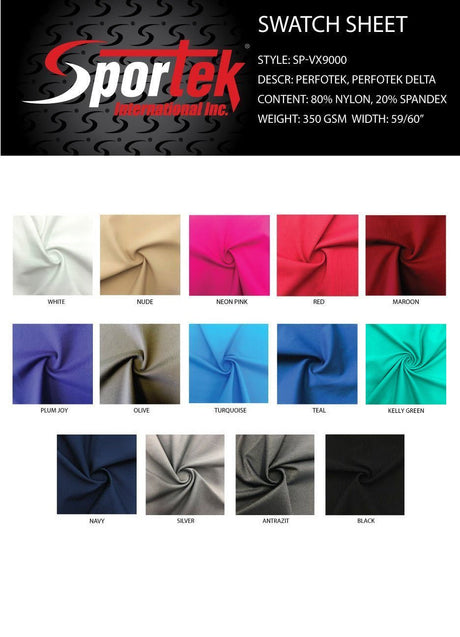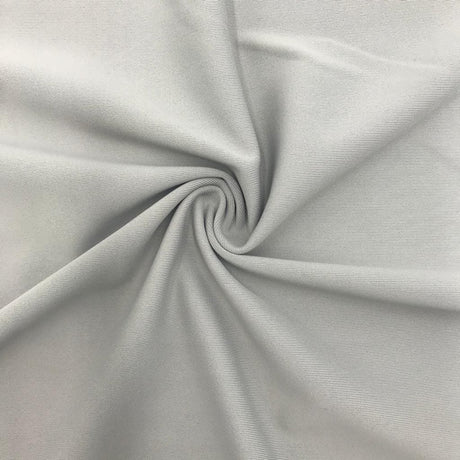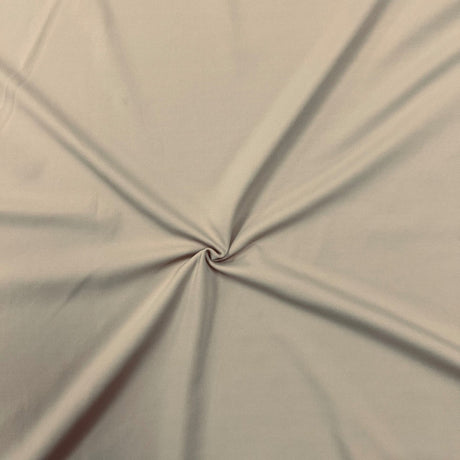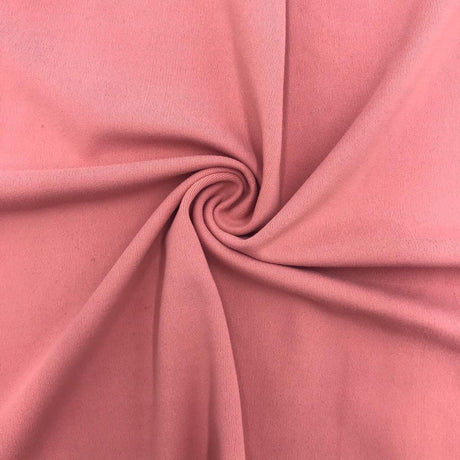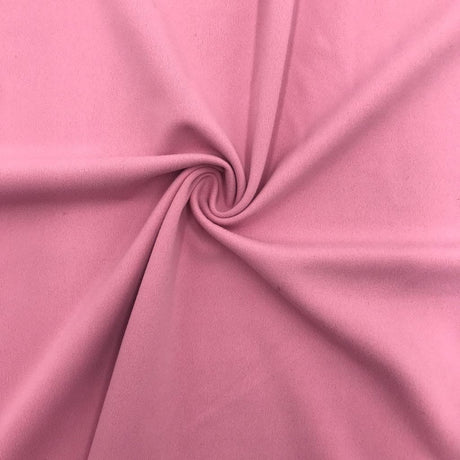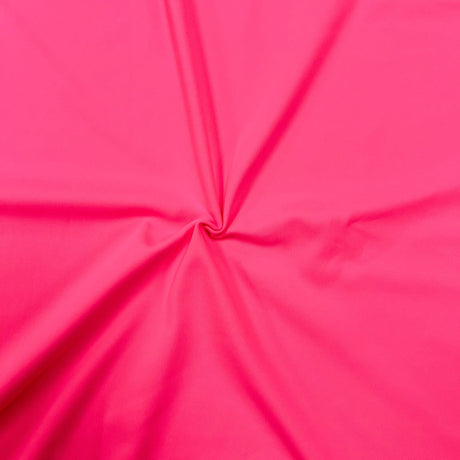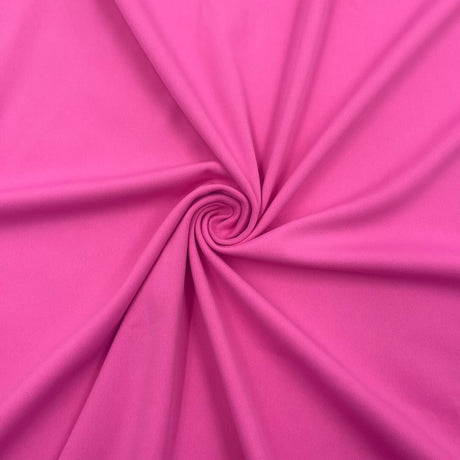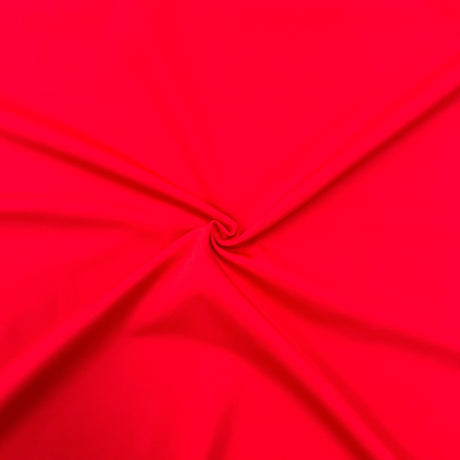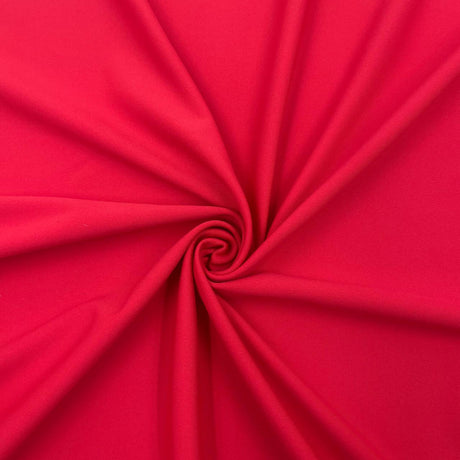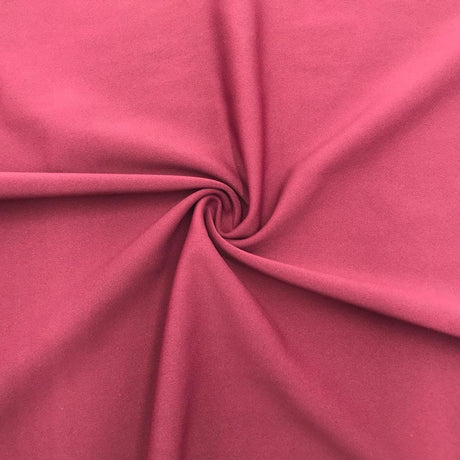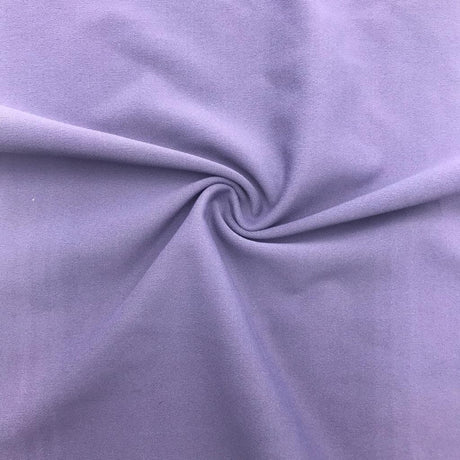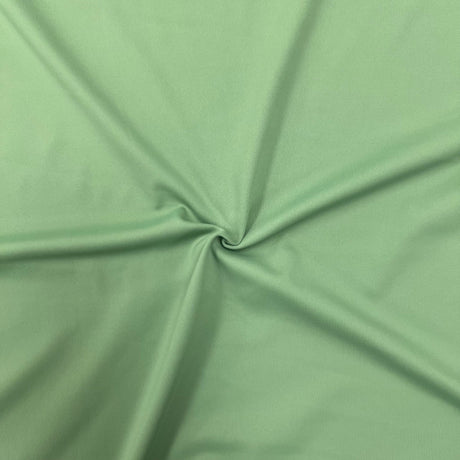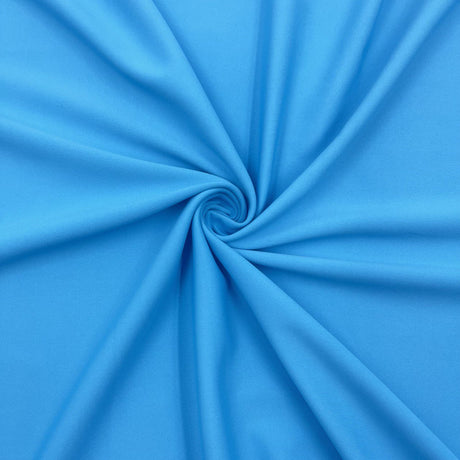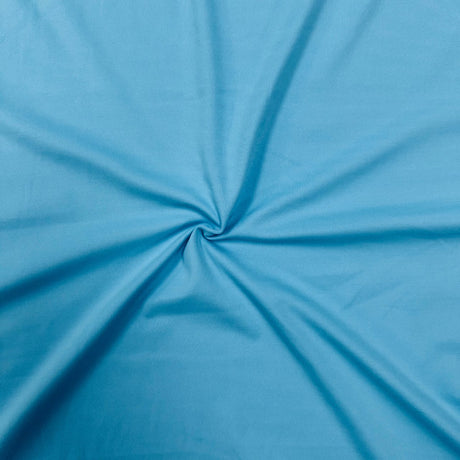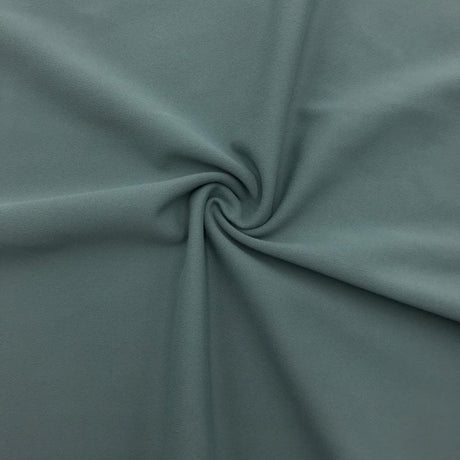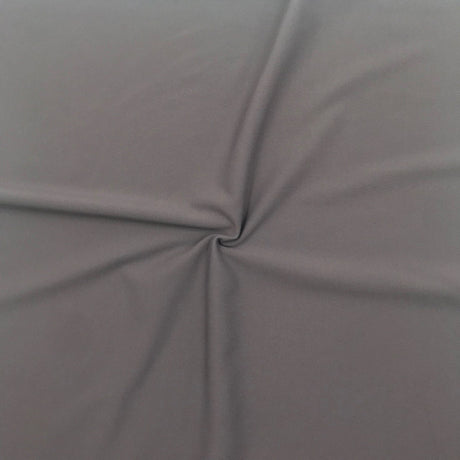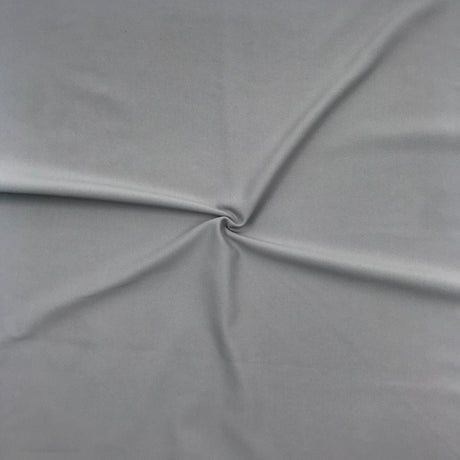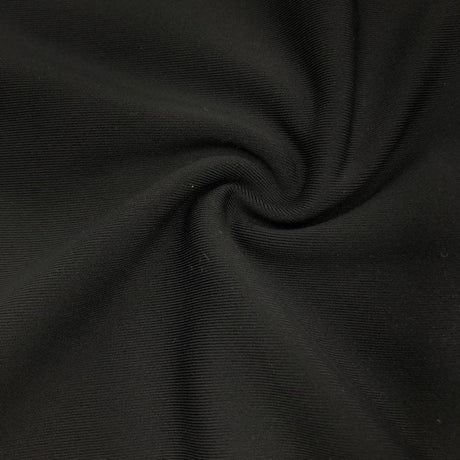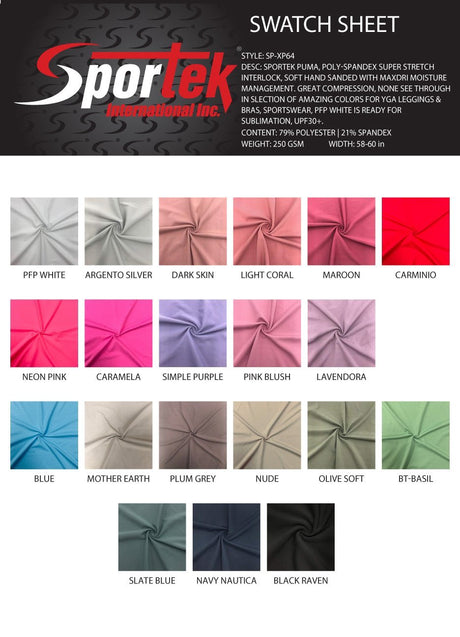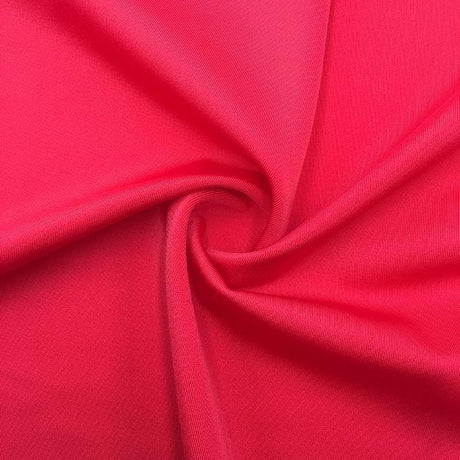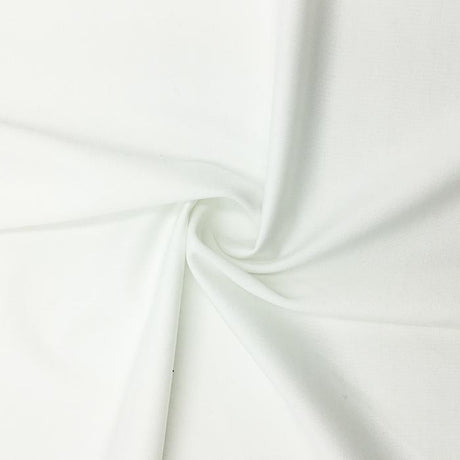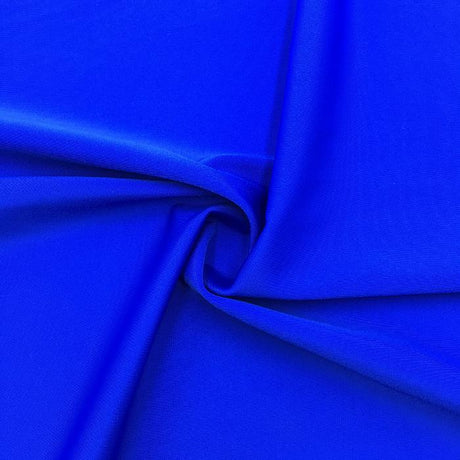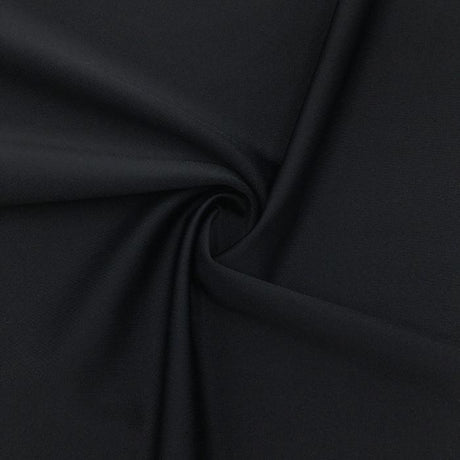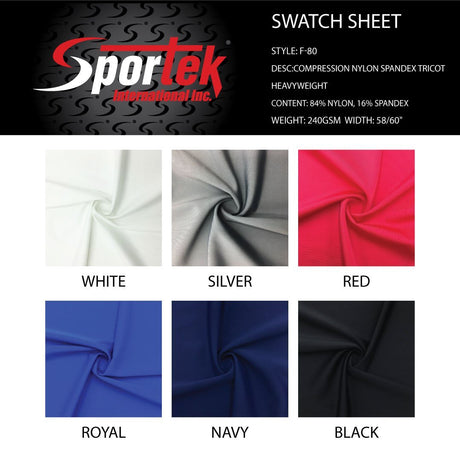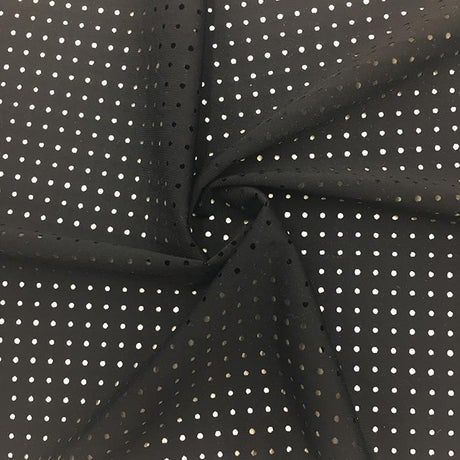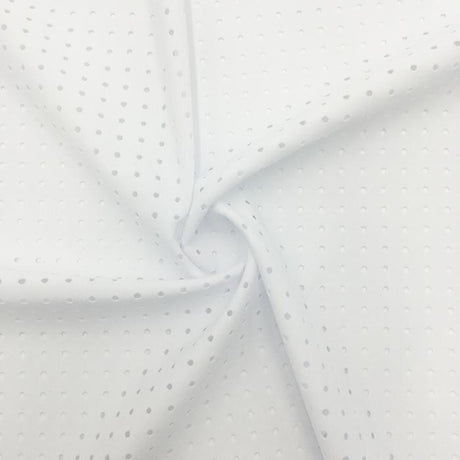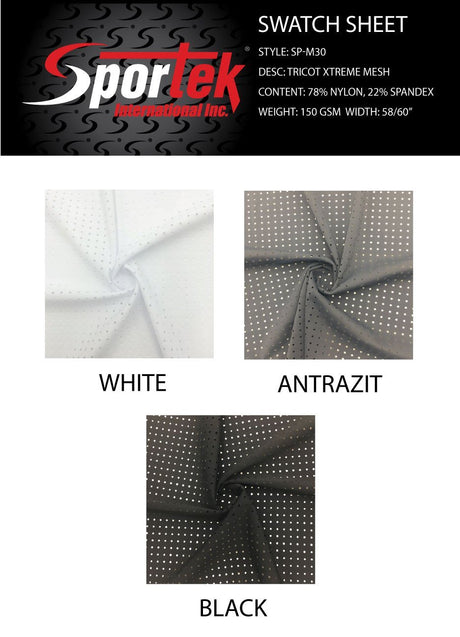
Example: A swimsuit made from a ribbed nylon-spandex fabric, offering style with performance features. Swimwear fabric quality impacts both appearance and longevity.
Besides looking stylish, a swimsuit’s fabric must perform under harsh conditions. Pool chlorine, saltwater, and intense sun exposure can all take a toll on swimwear. The right swimwear fabric will withstand chemicals and UV rays while keeping its shape; the wrong choice may sag, fade, or even leave your skin exposed to harmful sun. For designers, sewists, and swimwear brands, understanding fabric performance is crucial to create products that last. In this article, we’ll break down common swimwear textiles and how they rate in three key areas: chlorine resistance, UV protection, and stretch recovery.
Most modern swimsuits are made from synthetic blends – typically either nylon or polyester combined with spandex (elastane) for stretch. Each material has its strengths: polyester is known for durability and shape retention, while nylon is loved for its soft feel and vibrant color potential. We’ll explore these fabric types (including PBT, a special chlorine-proof polyester) and compare how they perform. A handy comparison table and tips for choosing the right swimwear fabric for your project or business are also included. Let’s dive in.
Swimwear Fabric Types: Nylon, Polyester & PBT
Swimwear fabrics are usually distinguished by their fiber content. The main players are nylon (polyamide), polyester, spandex (the elastic component), and PBT (polybutylene terephthalate, a form of polyester). These fibers are often blended to balance stretch, comfort, and longevity. Here’s an overview of the most common swimwear fabric types and their characteristics:
Nylon-Spandex Blends (Polyamide Elastane)
Nylon blended with spandex is one of the most popular choices for bikinis and fashion swimsuits. A typical nylon-spandex swim fabric might be around 80–85% nylon and 15–20% spandex. This composition yields a very stretchy, silky fabric that hugs the body and provides excellent comfort and mobility. Nylon fibers are lightweight, dry relatively quickly, and have a smooth, soft handfeel, making them ideal for high-end prints and vibrant colors on swimwear.
However, nylon-spandex blends offer only moderate performance against chlorine and UV exposure. Nylon is less chemically stable in chlorine than polyester – it feels soft but can deteriorate faster in chlorinated pools, losing shape and elasticity over time. In fact, experts advise against using pure nylon suits for frequent pool swimming due to this vulnerability. Similarly, untreated nylon provides minimal sun protection (roughly UPF 5 on its own). Many manufacturers compensate by using tighter knits or adding UV-blocking treatments to nylon fabrics to achieve UPF 50+ ratings. If choosing a nylon-spandex fabric, look for ones advertised as “chlorine-resistant” or UPF 50+ to ensure added protection, especially for active or outdoor use.
Summary: Nylon-spandex blends are prized for their softness, 4-way stretch and comfort, making them great for fashion-forward swimwear. They take color beautifully and feel gentle on the skin. Just be aware that without special treatments, they are more prone to chlorine damage and UV fading, so they’re best for occasional use, beachwear, or designs where maximum stretch and softness are the priority rather than all-day pool training.
Polyester-Spandex Blends
Polyester-spandex blends have become the go-to for performance and longevity. In this blend, polyester (typically 75–90%) is combined with spandex (10–25%) to marry strength with stretch. Polyester is a tough synthetic fiber that resists stretching out and holds up well against pool chemicals and sunlight. Unlike nylon, polyester has a molecular structure that naturally blocks more UV radiation, with an inherent rating of about UPF 15 even without additives. It also absorbs less water than nylon, meaning swimsuits made with polyester remain lighter when wet and dry faster.
In terms of chlorine and fading, polyester is often considered the “gold standard” – swimsuits made with 100% polyester can last 3–4 times longer in chlorinated water than those made with ordinary spandex blends. Polyester fibers simply don’t break down as quickly, so fabrics maintain their color and integrity through many swim sessions. When blended with spandex, the fabric gains the necessary elasticity and comfort while retaining polyester’s durability and shape retention. An ~85/15 polyester-spandex tricot, for example, will feel a bit firmer than a nylon suit but will resist chlorine and hold its shape better over time.
Modern polyester swim fabrics can be quite soft and high-quality – they’ve come a long way from the stiff poly swimsuits of the past. Many are now engineered for 4-way stretch and excellent recovery. They are also a top choice for sublimation printing (transfer of vibrant prints via heat) because polyester yarns hold printed inks well. If your project involves printing a custom design on the fabric, polyester is often ideal (most UPF swim shirts and team swimsuits use printed polyester blends).
Summary: Polyester-spandex fabrics are highly regarded for athletic and all-purpose swimwear. They offer high chlorine resistance and UV stability, maintaining color and fit even with regular pool use. While slightly less silky than nylon, they are still comfortable and ensure a long lifespan for swimsuits. Use polyester blends when longevity and rugged performance are key – e.g. swim team suits, competitive swimwear, or any suit that needs to endure season after season.
Polyester PBT Blends (Chlorine-Proof Fabrics)
PBT stands for polybutylene terephthalate, a type of polyester known for its exceptional chlorine resistance. Fabric mills often blend PBT with standard polyester (often a 50/50 mix) to create swimsuits that are labeled “chlorine-proof” or “100% chlorine resistant.” For example, Speedo’s famous Endurance+ fabric is 50% polyester and 50% PBT, and it’s nearly immune to chlorine damage. PBT’s engineered molecular structure actively repels chlorine molecules, so it maintains strength and color even after hundreds of hours in treated pool water. In fact, PBT/polyester suits can last through several seasons of daily swimming with minimal fading or stretching.
One remarkable aspect of PBT fabrics is that they achieve stretch without needing much (or any) spandex. PBT yarns can be textured during manufacturing to impart a natural 2-way stretch. While they may not be quite as stretchy as a spandex-blend, they still provide good elasticity and snap back to shape instantly after stretching. This gives competitive swimmers muscle compression and a tight fit without the degradation issues of spandex. PBT fabrics also retain very little water, helping swimmers glide through water with less drag. They resist pilling, snagging, and UV exposure as well – many PBT blends come with built-in UPF 50+ protection by virtue of their tight knit and the polyester content.
On the flipside, a suit made of polyester/PBT can feel a bit firmer and have less stretch range than one with 20% spandex. For recreational wearers, that means it might be a little harder to put on, but once on, it will stay very supportive. Designers sometimes use PBT fabrics for swim training suits, competition swimwear, or any situation where maximum durability is needed. It’s also popular in kid’s swimsuits and swim school uniforms since those see a lot of pool time.
Summary: Polyester/PBT fabrics are the workhorses of the swimwear world, offering very high chlorine resistance (almost “chlorine-proof”) and excellent longevity. They hold color and shape swim after swim, and often include UV protection as well. Choose PBT blends if you need a swimsuit textile that can truly stand up to daily chlorine exposure – just keep in mind the stretch is ample but not as extreme as a spandex-heavy fashion fabric.
(Note: Other swimwear materials exist, such as 100% neoprene for wetsuits or innovative eco-friendly fabrics like recycled nylon/poly. However, nylon-spandex, poly-spandex, and poly/PBT cover the vast majority of swimwear applications, from bikinis to racing swimsuits.)
Chlorine Resistance: How Fabrics Survive Pool Chemicals
Chlorine is added to pools to kill bacteria, but it’s ruthless on swimwear fibers. In water, chlorine transforms into hypochlorous acid – essentially a diluted bleach that oxidizes fibers and dyes on a molecular level. Over time, this causes swimsuits to weaken, lose elasticity, and fade in color. According to one study, a swimsuit can lose over 60% of its tensile strength after 300 hours in chlorinated water if made from a non-resistant fabric. That’s why chlorine resistance is a make-or-break factor for swimwear that will see pool use regularly.
Effects of Chlorine on Swimwear:
- Elastic fiber degradation: Chlorine attacks elastane (spandex) first, breaking its molecular bonds. The result is lost stretch – a once-snug suit suddenly sags and feels baggy as the elastic fibers “snap” and fail. This is why a cheap Lycra bikini might barely last a month of frequent swimming; the spandex in the fabric disintegrates, leaving a stretched-out suit. Polyester and PBT fibers, in contrast, break down much more slowly under chlorine, so fabrics high in those fibers maintain their tension and shape longer.
- Color fading: Chlorine acts like a mild bleach. It oxidizes dyes, meaning vibrant colors and prints will gradually become dull, washed-out, or take on a yellowish tint. Even the best dyes can only resist chlorine to a point. You might notice neon colors losing their pop or dark colors lightening after many pool sessions. (High-quality swim fabrics use chlorine-stable dyes and also UV-stable dyes to slow this process, but frequent rinsing in fresh water after swimming is still recommended to rinse out chlorine and prevent excessive fading.)
- Fiber brittleness and pilling: As chlorine weakens fibers, the fabric can become more prone to abrasion. Rough pool decks or slides may snag a weakened swimsuit, causing those little pills or runs in the fabric. A suit that’s starting to bag out and pill is a telltale sign the material has been damaged by chlorine over time.
Knowing these effects, textile manufacturers have developed chlorine-resistant swimwear fabrics to combat the problem. The simplest solution is using more polyester (or PBT) in the blend, since polyester is much more chlorine-stable than nylon or spandex. A 100% polyester swimsuit can last three to four times longer in chlorinated water than one made primarily of Lycra/spandex. No wonder competitive and lap swimming suits are usually poly/PBT based. Some makers also use special chlorine-resistant elastane fibers – for example, Creora® HighClo™ spandex, which is a modified elastane engineered to withstand chlorine damage longer. Blends that incorporate these high-performance elastanes will advertise improved chlorine resistance and help the suit retain its stretch.
In our fabric types above, we saw how they rank for chlorine resistance: poly/PBT blends are the best (virtually chlorine-proof), polyester-spandex blends are a close second (highly chlorine-resistant), and nylon-spandex blends are moderate (prone to faster breakdown). If you are designing swimwear for heavy pool use – say for a swim team, aquafitness class, or swim school – prioritizing chlorine resistance is key. Choose fabrics with a high polyester or PBT content, and avoid those that are mostly nylon or standard spandex for such applications. Even with a chlorine-resistant fabric, it’s wise to rinse swimsuits in cool fresh water after each use and avoid leaving them in the sun or a hot car (heat + chlorine residue can accelerate degradation of elastic).
To sum up, chlorine is the enemy of swimwear longevity. But by selecting the right fabric, you can dramatically extend a swimsuit’s life. High-polyester and PBT fabrics will hold up against hundreds of hours of pool time, keeping their color and snap. Lower-quality blends will start to sag or fade much sooner. Always check fabric labels or descriptions for terms like “chlorine-resistant” or “chlorine-proof” if pool durability is a priority.
UV Protection: Blocking the Sun’s Rays
Swimwear isn’t just exposed to water – it spends lots of time in the sun, whether at the beach or an outdoor pool. Overexposure to ultraviolet (UV) rays can not only harm your skin but also weaken swimwear fabrics over time. UV radiation can degrade certain fibers (especially spandex) and cause colors to fade, similar to chlorine’s bleaching effect. That’s why many high-quality swim fabrics advertise UV protection, often quantified as a UPF rating.
UPF (Ultraviolet Protection Factor) is the clothing equivalent of SPF (sunscreen rating). A UPF number tells you how much UV radiation penetrates the fabric. For example, UPF 50 means only 1/50th of UV rays (about 2%) can pass through, so it blocks 98% of UV. By contrast, a typical white T-shirt might be around UPF 5 (letting through 20% of UV). In swimwear, a UPF 50+ fabric is considered excellent sun protection – it’s the standard for rash guards, swim shirts, and kids’ UV swimwear designed to safeguard skin.
Not all swim fabrics inherently provide high UV protection; it depends on fiber type, knit density, color, and any special finishes:
- Fiber content: Synthetic fibers like polyester and nylon generally block UV better than natural fibers. Polyester in particular does an excellent job of disrupting UV light due to its molecular structure. Nylon is also used in many UPF-rated swim fabrics, though on its own a plain nylon can have low UV protection if it’s thin or light-colored (as mentioned, roughly UPF 5 without enhancements). Both fibers can be engineered for high UPF, but polyester tends to have a slight edge, often starting around UPF 15 even in basic form. Blending in spandex generally does not improve UV protection – in fact, if a fabric has a very high spandex percentage or is stretched very tight on the body, UV transmission can increase (stretched-thin material lets more light through). Thus, most swimwear keeps spandex to about 20% or less, which balances stretch needs without too much compromise to UV blockage.
- Fabric construction (weave/knit and weight): A tightly knitted or thicker material will block more UV than a sheer or loosely woven one. Many swimwear fabrics are warp-knit tricot with a very tight structure specifically to improve coverage. Heavier weight fabrics (and those with liners) also reduce UV transmission simply by having more material for rays to get through. For example, a double-layer swimsuit or one with a dark lining will protect better than a single layer of light fabric.
- Color and dye: Darker or more saturated colors absorb more UV rays, preventing them from reaching the skin. A black or navy swimsuit will typically have higher UV protection than a white or pastel one, all else being equal. Similarly, fabrics dyed with certain UV-absorbing dyes can achieve higher UPF. Many bright swimwear fabrics naturally have good UPF due to the chemical nature of their dyes. One advantage of polyester here is that color-rich polyester fabrics can offer excellent UV protection thanks to their light-absorbing dyes and pigments.
- Special finishes: Some swimwear textiles include UV-inhibiting treatments or fibers impregnated with additives (like titanium dioxide, the mineral used in sunscreens) to boost their sun protection. These treatments can be applied during manufacturing to ensure a fabric hits UPF 50 without relying on just the knit or color. High-end swim brands often advertise “UPF 50+” on their garments, indicating such enhancements. One benefit of these treatments is that they are usually bonded at the fiber level, so the UV protection remains effective through many washes and dips in the pool.
When shopping for or specifying swimwear fabric by the yard, check if the supplier provides a UPF rating or mentions UV protection. Many quality swim fabrics are rated UPF 50+, meaning they block 98% of UVA and UVB rays. This is particularly important for full-coverage swim garments like surf shirts, modest swimwear, or children’s swimsuits, where the fabric is the primary line of defense against sunburn. Even for smaller swimsuits, a UPF fabric ensures that the areas covered by the suit (which people often forget to apply sunscreen on) are protected. For example, Speedo’s Endurance+ polyester/PBT fabric not only is chlorine-proof but also provides UPF 50+ sun protection built-in.
In summary, UV protection in swimwear fabric is about safeguarding both the wearer and the material. A UV-stable fabric will keep its integrity and color longer under the sun, and a high UPF rating will keep your skin safer during those long beach days. To maximize UV protection: opt for fabrics labeled UPF 30-50+, go for deeper colors or lined materials for swimsuits, and remember that coverage matters (a long-sleeve swim shirt made of UPF fabric can significantly reduce UV exposure compared to a bikini alone). With the right fabric, your swimwear can be a stylish shield against the sun.
Stretch & Recovery: Maintaining Shape and Comfort
One reason we don’t swim in regular clothes is that swimwear needs to move with our bodies. Whether you’re diving, paddling, or lounging, a swimsuit should stretch comfortably and then snap back to its original shape. This property is known as stretch and recovery – essentially, the fabric’s elasticity and its ability to recover its shape after being stretched. High stretch gives you freedom of movement; strong recovery keeps the suit fitting snug and supportive wear after wear.
Spandex (Elastane) is the key ingredient that gives swimwear its remarkable stretch. Also known by the brand name Lycra®, spandex can elongate 5–8 times its resting length and spring back without breaking. In swim fabrics, even a small percentage of spandex (usually 10–25%) provides the 4-way elasticity needed for tight fit and body-hugging comfort. For example, a fabric that is 80% nylon and 20% spandex can easily stretch both across and along the body, accommodating curves and movement, then recover to prevent sagging. Most quality swimwear fabrics are engineered to be 4-way stretch, meaning they stretch in both the horizontal and vertical directions. This is achieved by knitting the base synthetic (nylon or polyester) with spandex in a way that elasticity is distributed evenly. A true 4-way stretch material is essential for swimwear because it ensures maximum flexibility in all directions, critical for activities like swimming laps or surfing.
However, achieving great stretch is only half the battle – maintaining that stretch over time is the real challenge. Lesser fabrics might feel fine initially but start losing elasticity after a few uses, leading to a loose, ill-fitting suit. The culprit is often spandex degradation. As discussed, chlorine, heat, salt, and UV can break down spandex fibers. When spandex deteriorates, the fabric’s recovery suffers; you’ll notice the suit doesn’t “bounce back” as it once did and may permanently stretch out or develop thin, limp areas. This is why high-performance swim fabrics either protect the spandex (through chemical enhancements like chlorine-resistant spandex) or minimize reliance on it (as with PBT blends).
Several factors influence a swim fabric’s stretch & recovery performance:
- Spandex content: Generally, 15–20% elastane is a sweet spot for swimwear, providing plenty of stretch for comfort and fit. Some athletic competition suits use slightly lower (~15%) for a tighter compression fit, while some fashion swimsuits might go up to 25% for ultra-high stretch. Fabrics with much more than 25-30% spandex tend to lose durability (since spandex is the most sensitive fiber), and they can also have lower UV protection (spandex is less UV-resistant than poly/nylon). Conversely, fabrics with too little spandex (<10%) may not have sufficient recovery to mold to the body and stay up (imagine a swim trunk with only 5% spandex – it might start sagging when wet). Expert recommendations often suggest at least 8% spandex minimum in swimwear fabrics to ensure a secure fit, and typically more for form-fitting women’s swimwear.
- Quality of elastane: Not all spandex is equal. Branded elastanes like Lycra Xtra Life or Creora HighClo are formulated to have better chlorine, heat, and oxidation resistance. Using these can significantly extend a fabric’s recovery life. If you’re sourcing fabric, check if the spandex is described as “chlorine-resistant” or a special type – it can be a good indicator that the suit will hold its shape longer. High-quality spandex also tends to have better modulus (strength), meaning you can use a little less but still get good snap-back.
- Fabric knit structure: A well-constructed swimwear knit (like a warp knit tricot) is designed to lock in stretch. The knitting pattern and tension can affect how easily it stretches and how well it recovers. Many swim fabrics use four-way stretch tricot construction, which balances stretch uniformly and prevents distortion. This construction creates dynamic stretch and recovery that are essential for athletic swimwear requiring unrestricted movement. Some fabrics also incorporate power-net or mesh panels in certain areas of a swimsuit to add extra compression or support (for instance, tummy control panels) – these are tighter knits that give strong recovery in targeted zones.
- Recovery over time: One way to gauge a fabric’s long-term recovery is to read reviews or specs on durability. Does the fabric maintain its shape after many uses? As discussed earlier, chlorine-resistant fabrics maintain elasticity longer because the spandex (if any) is protected, or the fabric is using chlorine-immune fibers like PBT. On the other hand, if you notice a suit getting loose, it’s often because the elastic fibers have broken down. Proper care helps here: rinse swimwear after use, don’t wring it out harshly, and avoid high-heat drying. These practices protect the elastic and thus preserve recovery.
In short, fabric recovery is critical for swimwear longevity and comfort. It ensures your swimsuit continues to fit well and support you after dozens of wears. A fabric with excellent recovery will prevent that dreaded saggy-bottom or strap that won’t stay up. When choosing swimwear fabric, feel for a strong snap-back when you stretch it. Also consider the environment: for a chlorinated pool setting, a fabric with lower spandex (or chlorine-safe spandex) is wise so that the stretch factor doesn’t degrade quickly. For mostly ocean or leisure use, standard spandex blends are usually fine. As we’ve seen, materials like PBT can provide recovery without spandex, offering a different route to maintaining shape. Ultimately, investing in a high-quality swim fabric with proven stretch/recovery performance will pay off in swimsuits that not only fit great on day one but also after many adventures in the water.
Performance Comparison Table: Swimwear Fabrics at a Glance
To help summarize the differences in chlorine resistance, UV protection, and stretch & recovery among key swimwear fabric types, refer to the comparison table below. This table highlights how each fabric generally performs in each category:
|
Fabric Type |
Chlorine Resistance |
UV Protection |
Stretch & Recovery |
|
Nylon + Spandex Blend |
Moderate. Prone to chlorine damage over time; nylon/spandex blends feel soft but can lose shape relatively quickly in pool water. Regular chlorinated swimming will deteriorate elastane and shorten lifespan. |
Fair. Untreated nylon has low UV blockage (~UPF 5). Often needs tight knit or additives to reach high UPF. Many nylon blends are now engineered to UPF 50+ with special treatments. |
Excellent (initially). Very high 4-way stretch and a silky, form-fitting drape. Recovers well when new, providing superb comfort. However, extended sun or chlorine exposure can weaken the spandex, reducing long-term recovery. |
|
Polyester + Spandex Blend |
High. Polyester is very chlorine-resistant and helps the fabric withstand fading and fiber breakdown. Suits maintain color and elasticity much longer in chlorine compared to nylon blends. |
High. Polyester fibers inherently block more UV (often UPF ~15 alone). With appropriate dyes or finishes, poly blends easily achieve UPF 50+ protection, shielding skin from 98% of UV rays. |
Excellent. Strong 4-way stretch with spandex and superior shape retention from polyester. Fabric snaps back firmly and keeps its fit over many uses. High-quality poly/spandex blends have long-lasting recovery, especially if using chlorine-resistant spandex. |
|
Polyester + PBT (No Spandex) |
Very High. Nearly “chlorine-proof” – engineered to endure hundreds of hours in chlorinated water. Polyester/PBT fabrics resist chlorine degradation and hold their shape swim after swim (ideal for competitive swimwear). |
High. Typically constructed as a tight knit and often in darker shades, these fabrics usually provide UPF 50+ (many competition suits made of PBT poly are rated UPF50+ by design). Excellent at protecting skin and the fabric itself from UV damage. |
Good. PBT blends have a somewhat firmer stretch – they rely on the fiber’s mechanical stretch rather than lots of spandex. Still, they offer comfortable elasticity and spring back to shape immediately without bagging. Recovery remains consistent over time since there are no spandex fibers to break down. |
Note: The above are general performance trends. Actual results can vary with fabric quality, weight, and any special treatments (e.g., a “chlorine-resistant nylon” will do better in pool water, and a “power stretch” poly fabric might have extra spandex for more stretch). Always check specific fabric specifications when available.
Tips for Choosing the Right Swimwear Fabric
Selecting the ideal fabric for your swimwear project or product line involves balancing these performance factors with your design goals. Here are some practical tips to guide your decision:
- Consider the Use Case: Think about where and how the swimwear will be used. For competitive swimming or daily training in a pool, prioritize fabrics with high chlorine resistance (e.g. a polyester/PBT blend or a polyester with chlorine-resistant spandex) so the suits can endure constant exposure. For fashion swimwear or occasional beach wear, a nylon-spandex fabric might be preferred for its soft luxury feel and stretch, especially if chlorine exposure will be minimal. Match the fabric’s strengths to your end use – e.g. durability for sports vs. handfeel for resort wear.
- Evaluate UV Protection Needs: If you’re making swimwear intended for long hours in the sun – such as surf shirts, rash guards, or kids’ swim outfits – opt for fabrics labeled UPF 50+. Many fabric suppliers will indicate if a textile is certified for UV protection. Also, choosing darker colors or prints can help (they naturally absorb more UV). For business owners, being able to market your swim line as UPF 50+ is a great selling point for sun-conscious customers. If fabric info is not available, you can request UPF testing or go with known UV-protective fabric brands.
- Stretch & Support: Ensure the fabric has 4-way stretch for optimal comfort. A quality swim fabric should stretch at least 50% in both directions and include a minimum of ~10% spandex (elastane) for shape retention. This guarantees that your swimsuit will have the needed flexibility and will contour to the body well. If you need extra support or compression (for instance, shapewear swimsuits, sports swimwear, or plus-size designs), look for fabrics with a slightly higher spandex content or special knit structures. Some fabrics are labeled “power mesh” or “muscle compression” – these can be used in lining or panels to add support. Remember that a well-fitting, supportive suit comes from not just the design but the fabric’s recovery power.
- Chlorine-Resistant Elastane: If you love a fabric but worry about chlorine, see if it uses specialty spandex like Xtra Life Lycra® or Creora® HighClo. These elastanes are engineered to resist chlorine 10x longer than ordinary spandex, significantly extending the garment’s life. Incorporating such materials is ideal for swimwear that needs both superior stretch and chlorine endurance. Always check with suppliers – many performance swim fabrics will advertise this if they have it.
- Printing and Aesthetics: For designs that involve sublimation printing or bright, custom patterns, polyester-based fabrics are often the best choice (they yield crisp, permanent prints). If you plan on direct digital printing or want extremely vibrant hues, note that nylon fabrics can also be great for printing (nylon takes dye sublimation differently but can produce very vivid results, and it excels in wet-print techniques). Coordinate with your printer or fabric provider about which material will showcase your artwork best. Also consider shine vs. matte – nylon usually has a subtle sheen; polyester can be matte or shiny depending on the yarn. If you want that classic “shiny” look, tricot fabrics with gloss or foil prints are available; for a modern matte look, there are matte variants in both nylon and poly.
- Fabric Weight and Drape: Swimwear fabrics come in various weights, generally measured in grams per square meter (GSM). Lighter fabrics (~180-200 GSM) are great for fashion swimwear or ruffles, where you want a good drape. Heavier fabrics (~200-250 GSM) offer more support and are less likely to be see-through (important for light colors or unlined pieces). If using a light color or white, you might need a thicker fabric or a lining to ensure coverage. Always get a swatch if possible and do a stretch test – stretch it to see if it becomes transparent or if it feels supportive enough.
- Supplier and Quality: Buy from reputable suppliers who specialize in swimwear textiles. They will often advertise the key features (chlorine resistance, UV protection, etc.) so you know what you’re getting. Look for terms like OEKO-TEX® certified (meaning the fabric is free of harmful chemicals) or RECYCLED (if sustainability is a goal – many recycled poly or nylon fabrics now have performance equal to virgin fibers). Don’t hesitate to ask for tech sheets or test results, especially if you are producing a line of swimwear commercially. A good supplier should be able to provide details on a fabric’s composition and performance specifications.
- Testing and Prototyping: If time allows, test your chosen fabric. Make a prototype and use it in realistic conditions – chlorinated pool, ocean saltwater, sun exposure – to see how it holds up. This can reveal any issues (like unexpected fading or slow drying) before you commit to large yardage. At the very least, take a small cut of the fabric and soak it in a chlorine solution for a day, then compare stretch/feel/color to an untreated piece. This informal test can be very telling of chlorine durability.
By considering these tips, you can select a swimwear fabric by the yard that meets your project’s needs and delights your customers. The goal is to find the sweet spot of performance and aesthetics – a fabric that looks and feels great, and also performs under stress (water, sun, stretch). Fortunately, modern textile technology offers many options that check all those boxes.
Conclusion
High-performance swimwear fabrics are the unsung heroes behind every long-lasting swimsuit. By understanding the differences in fiber types and their resistance to chlorine, UV, and wear, you can make informed choices that result in better products. In summary, nylon-spandex blends provide superb comfort and stretch for fashionable swimwear, though they may need a bit of extra care with chlorine and sun. Polyester-based fabrics offer rugged durability, making them ideal for frequent swimmers and athletic use, all while delivering solid UV protection and shape retention. And for the ultimate chlorine-proof solution, poly/PBT blends stand up to pool chemicals like champions, ensuring swimwear that lasts season after season.
Ultimately, the best swimwear fabric is one that aligns with your specific needs – be it ultra-soft feel, maximum longevity, or skin-safe sun protection. Thanks to advancements in textile manufacturing, you don’t have to compromise. Many premium swim fabrics now combine all these features, offering 4-way stretch, superior recovery, and built-in resistance to chlorine, saltwater, and UV rays. Investing in such quality materials will pay off in the form of happy customers who find their swimsuits stay comfortable and vibrant over time.
Whether you’re a designer planning your next swim collection or a DIY sewist making a custom bikini, keep these insights in mind when picking your swimwear fabric. A little extra attention to fabric performance will ensure your creations not only look amazing but also endure the elements. Here’s to making a splash with swimwear that is as functional as it is fashionable!


